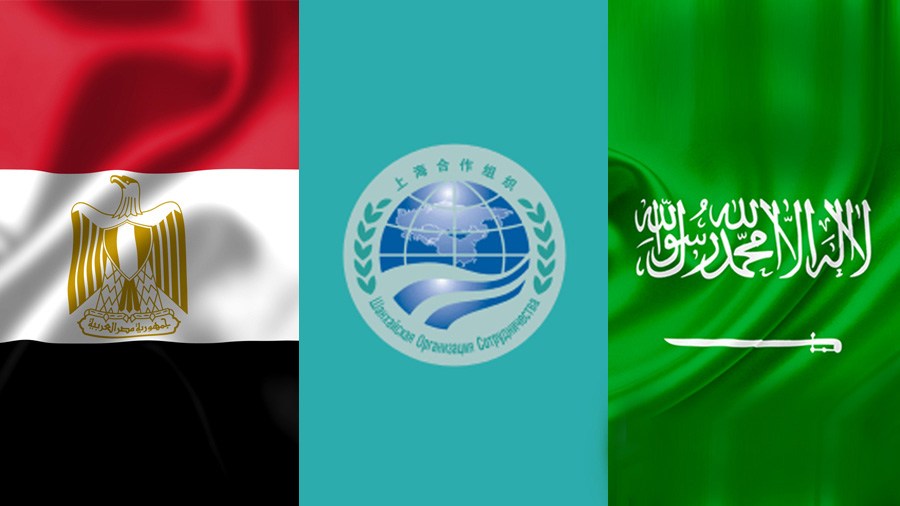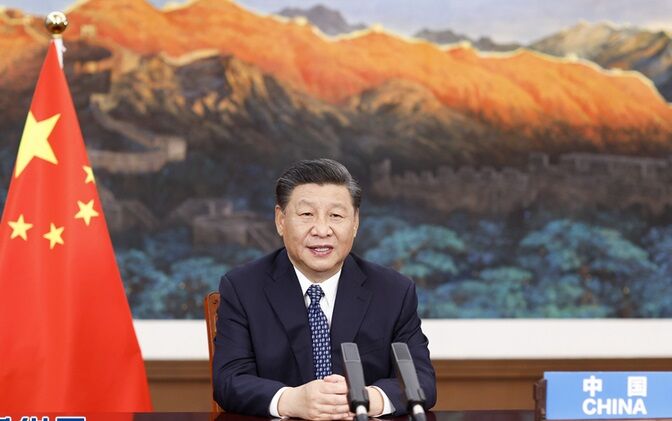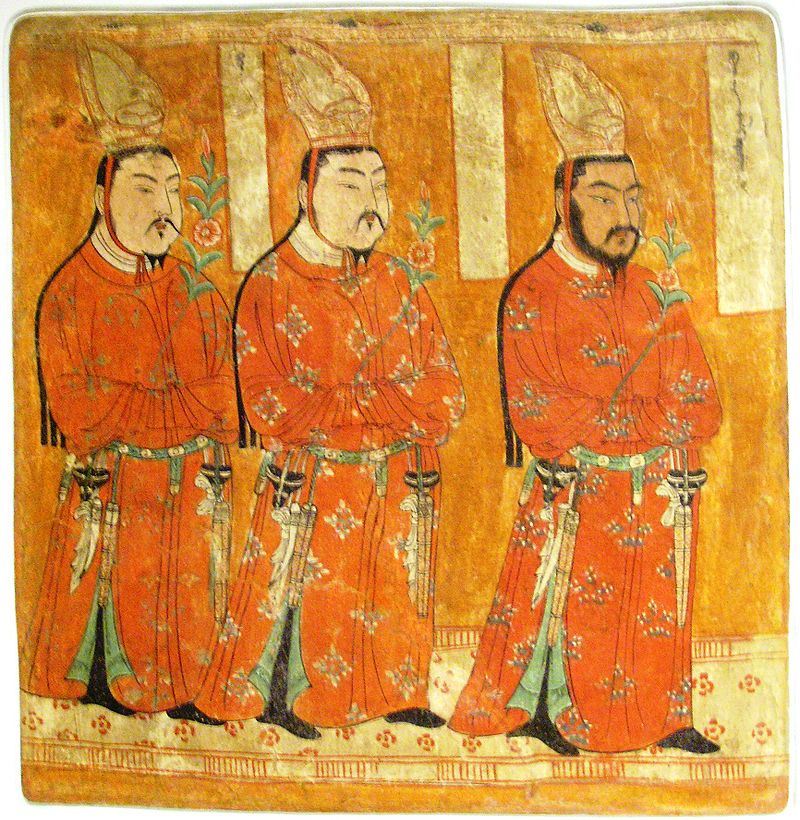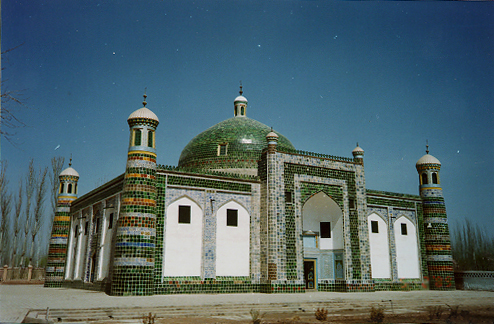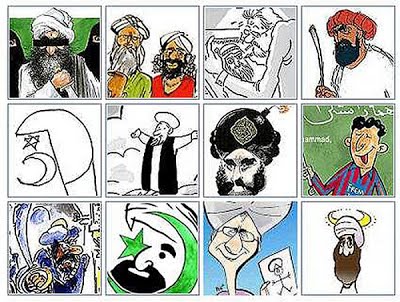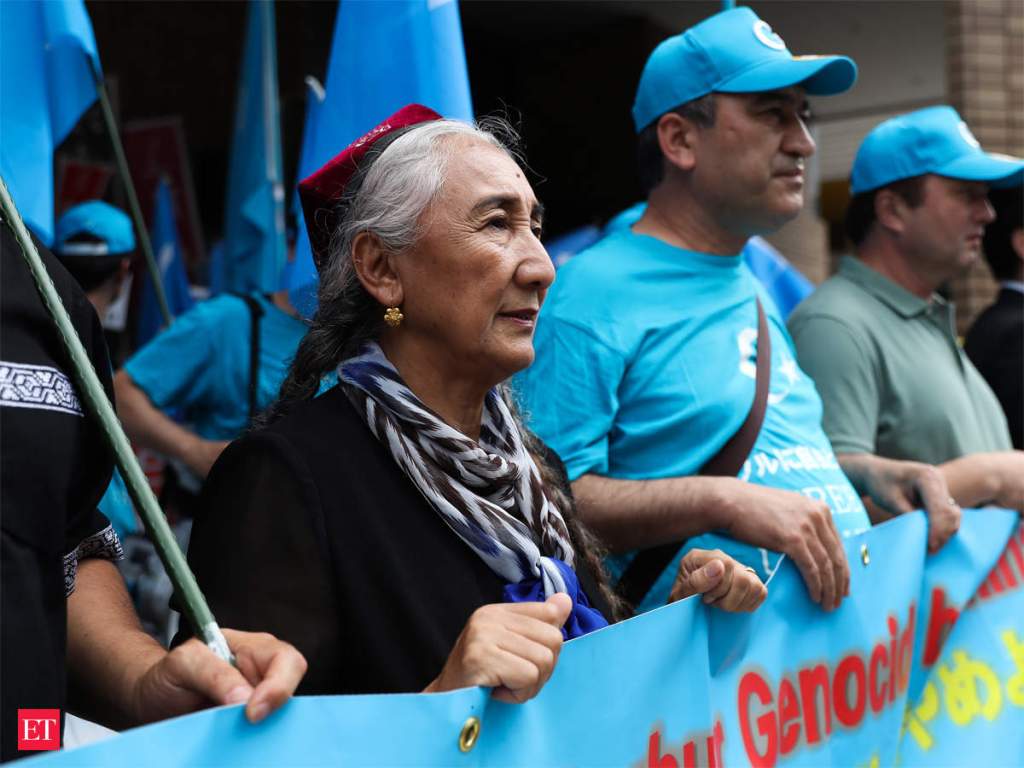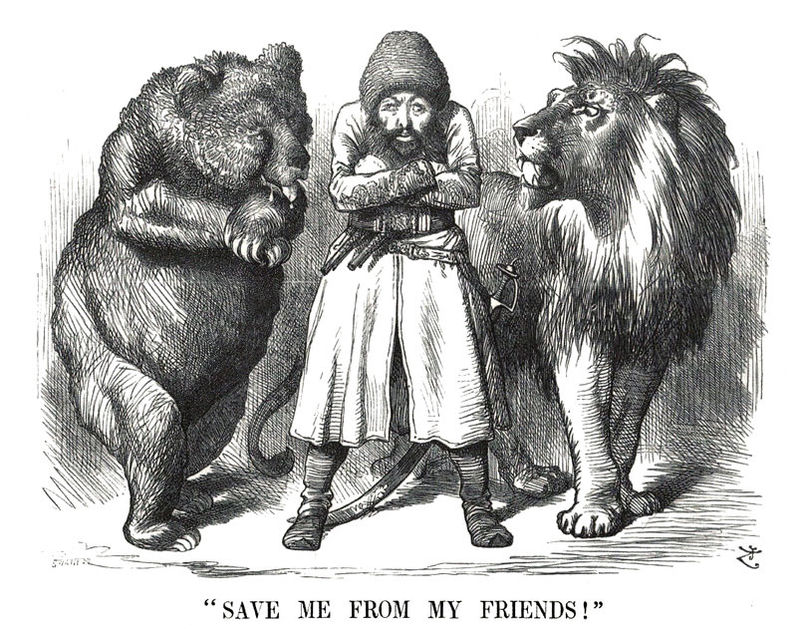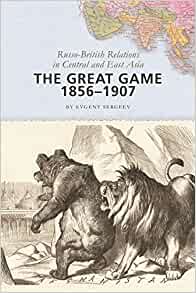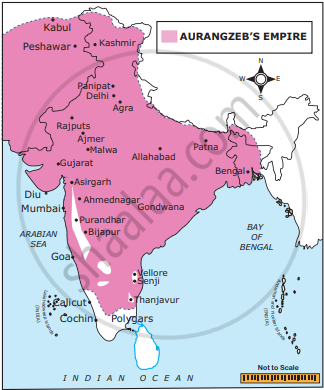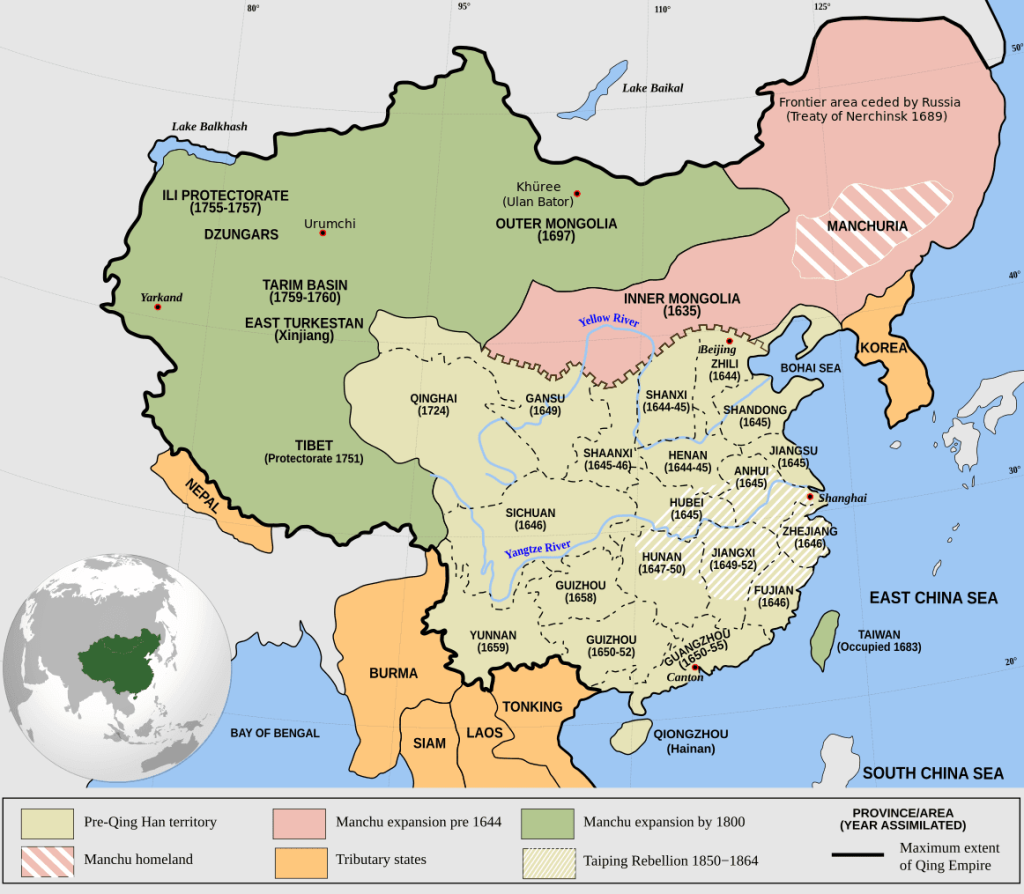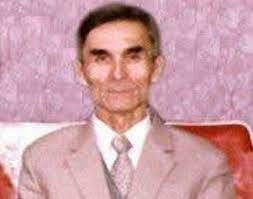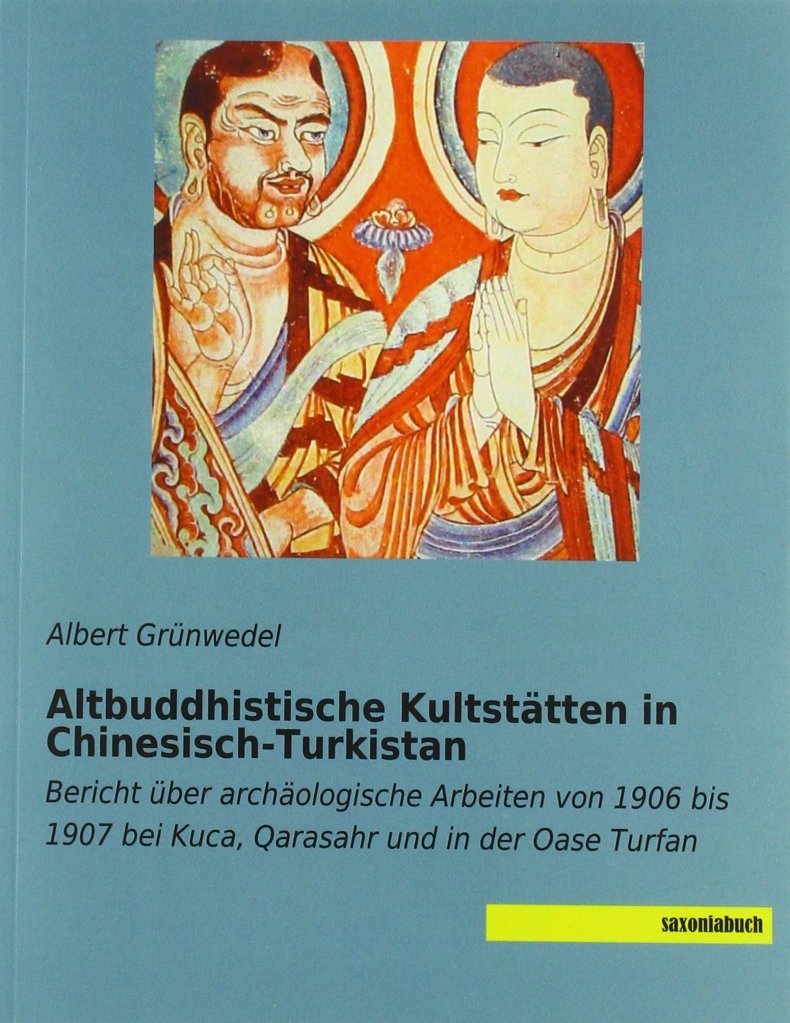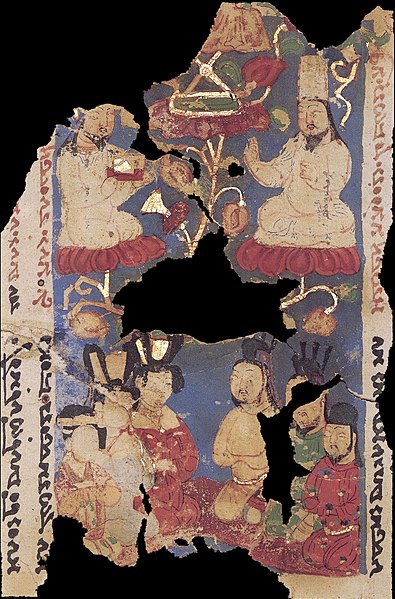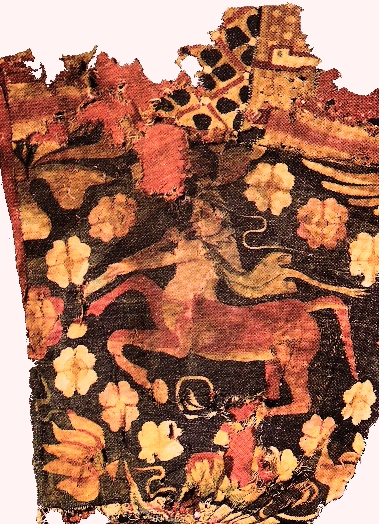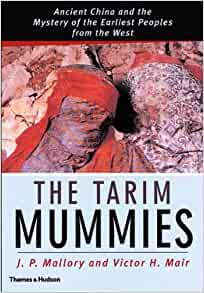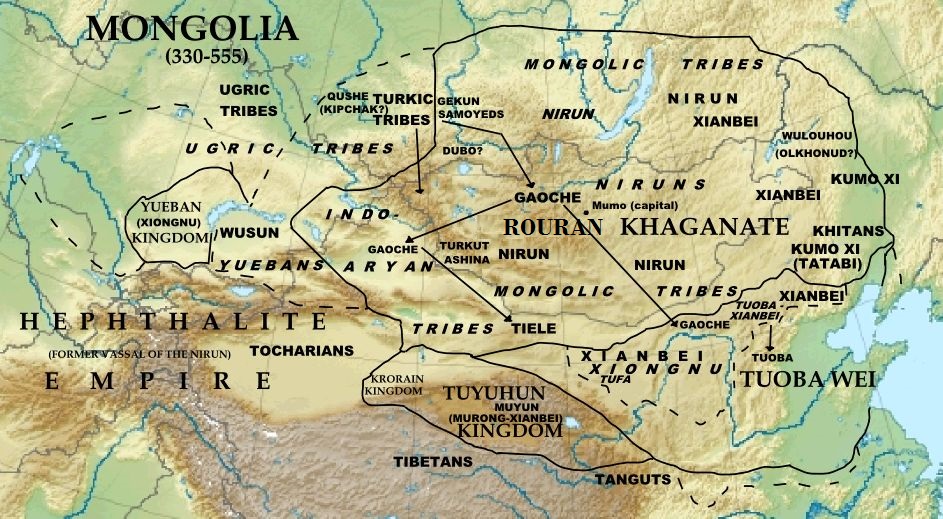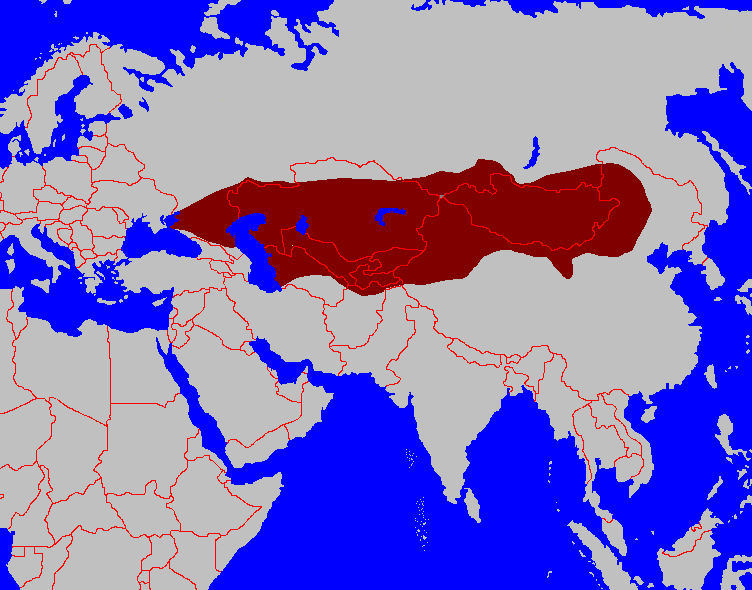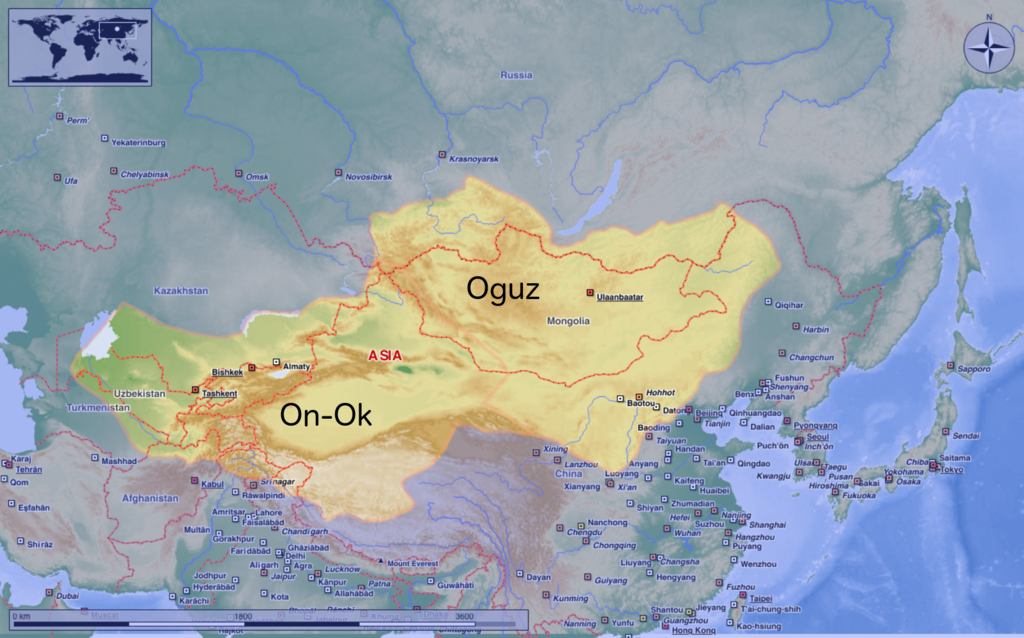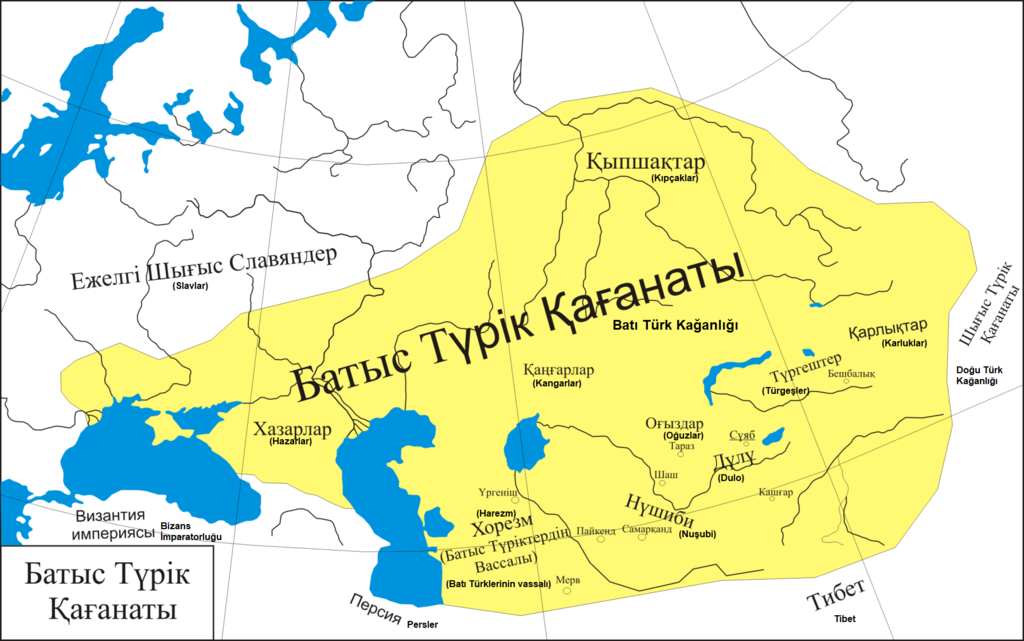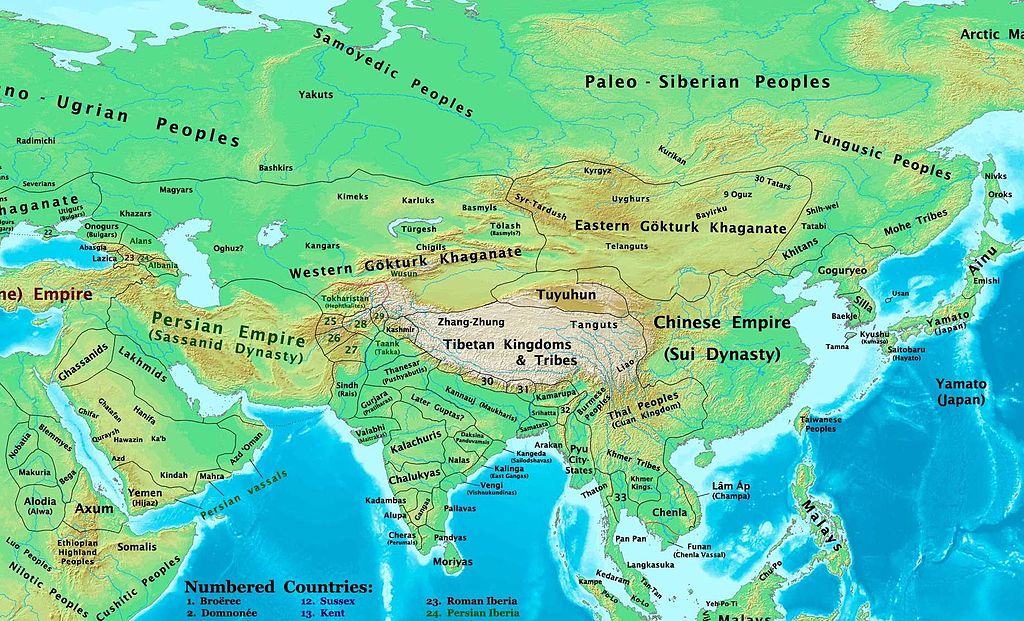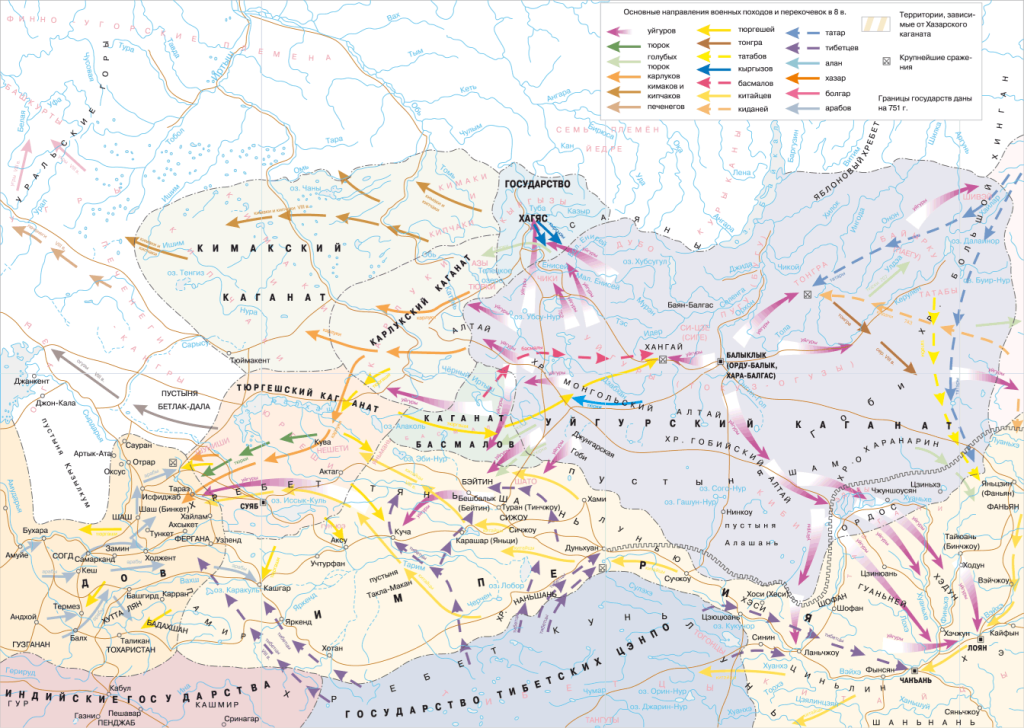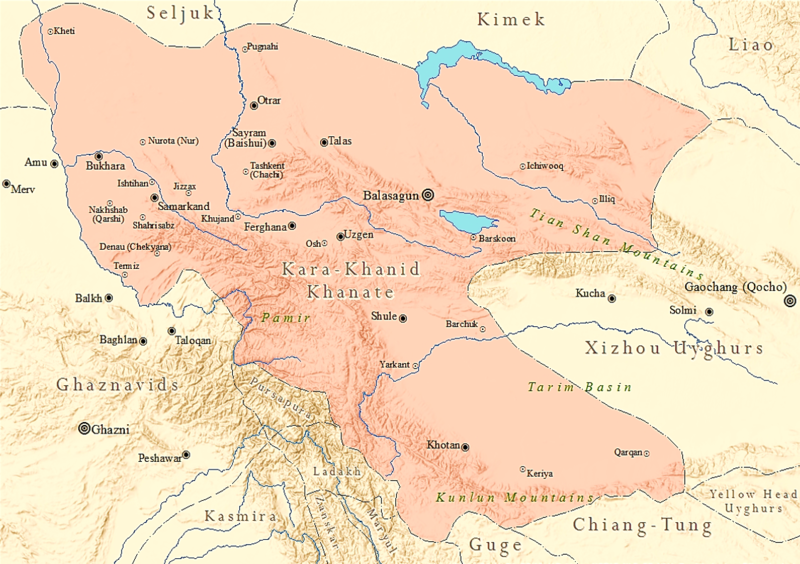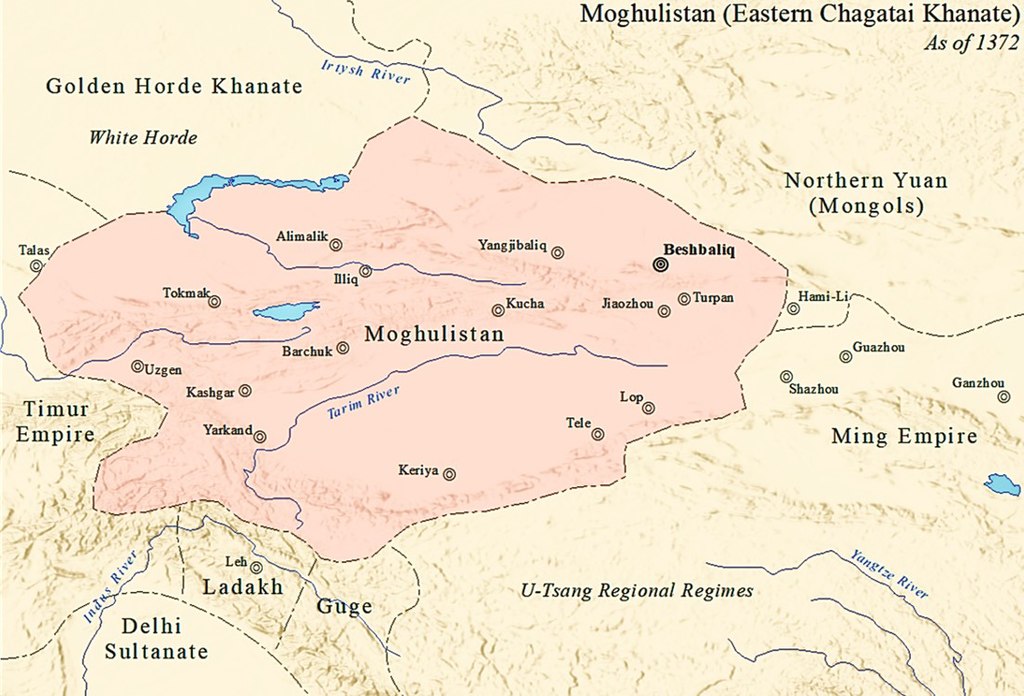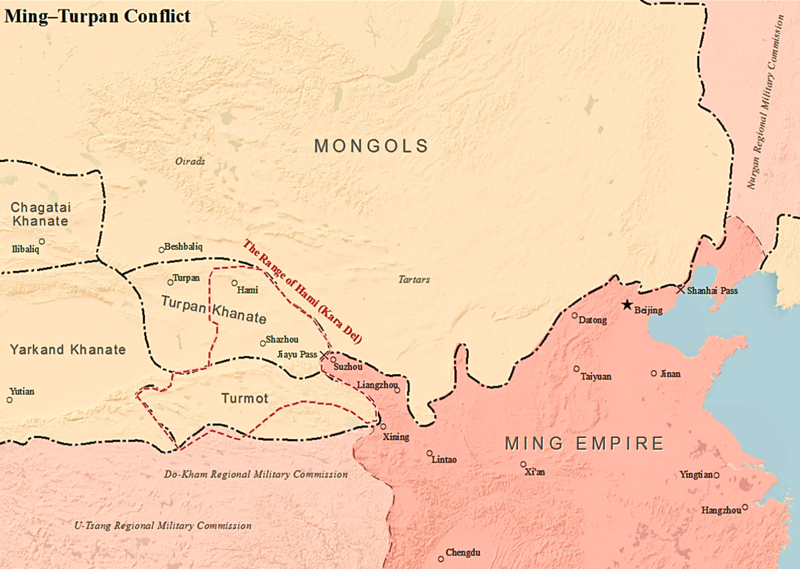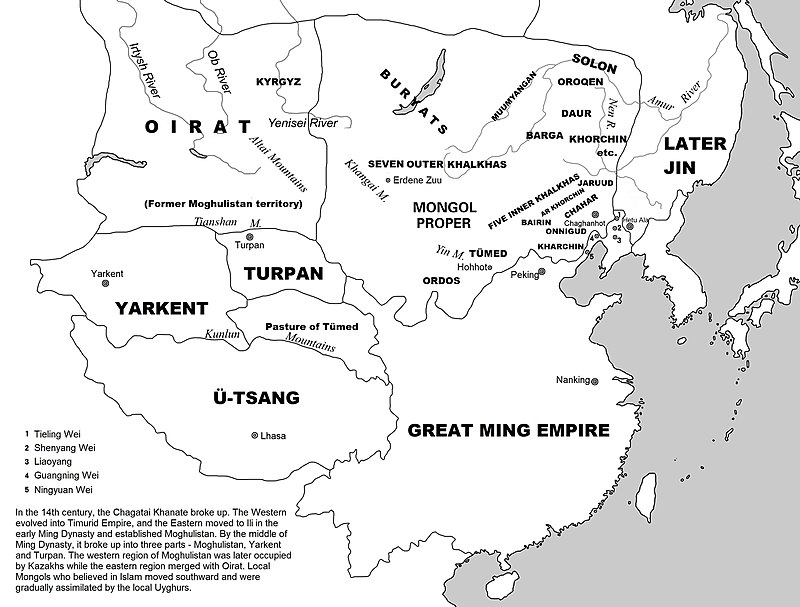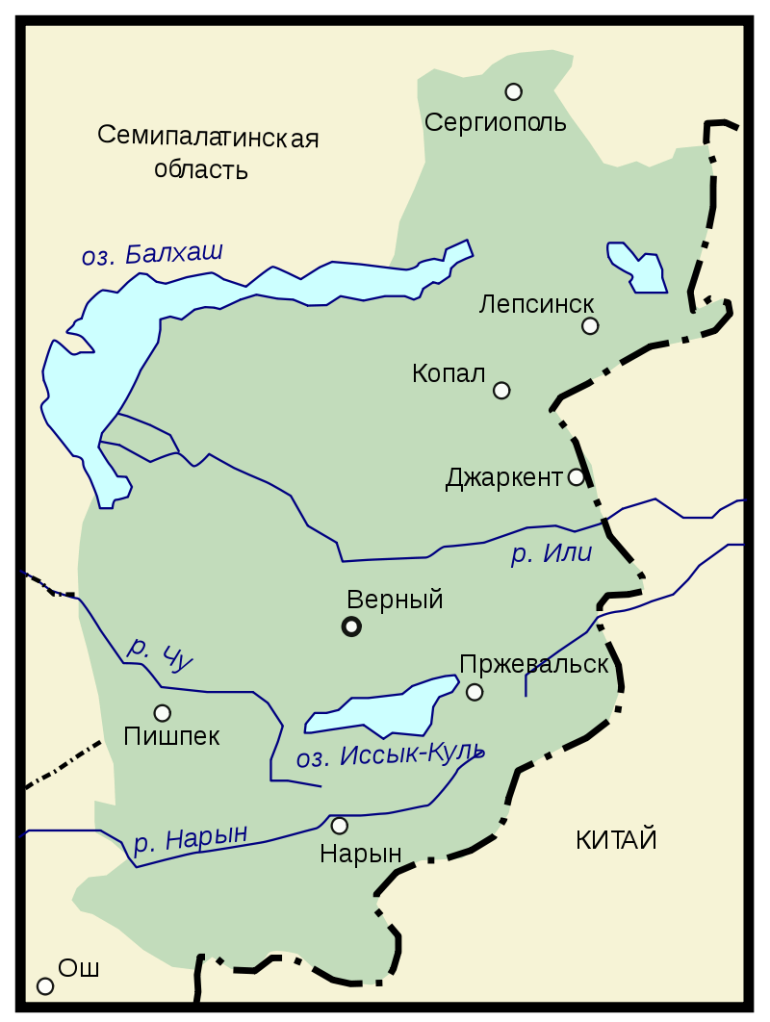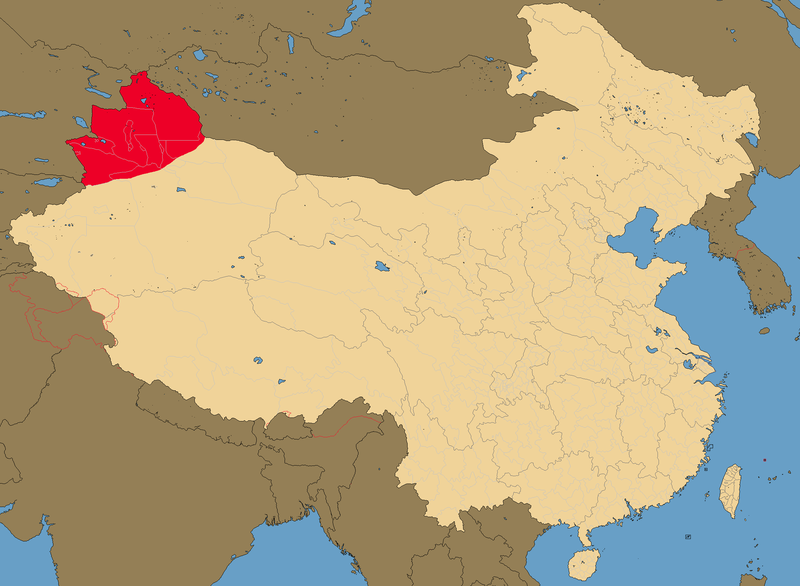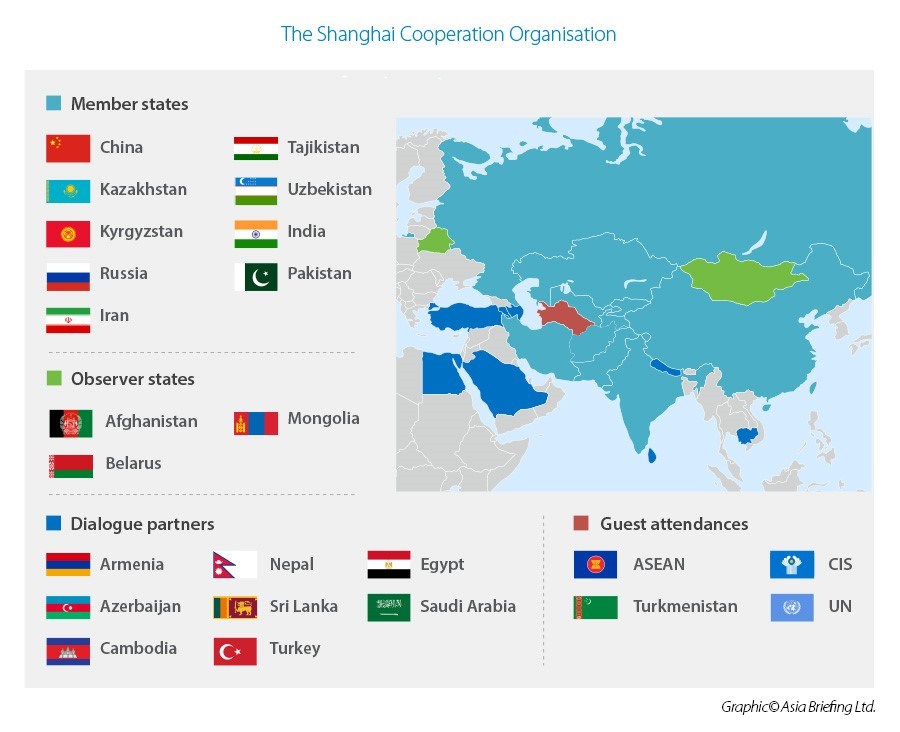
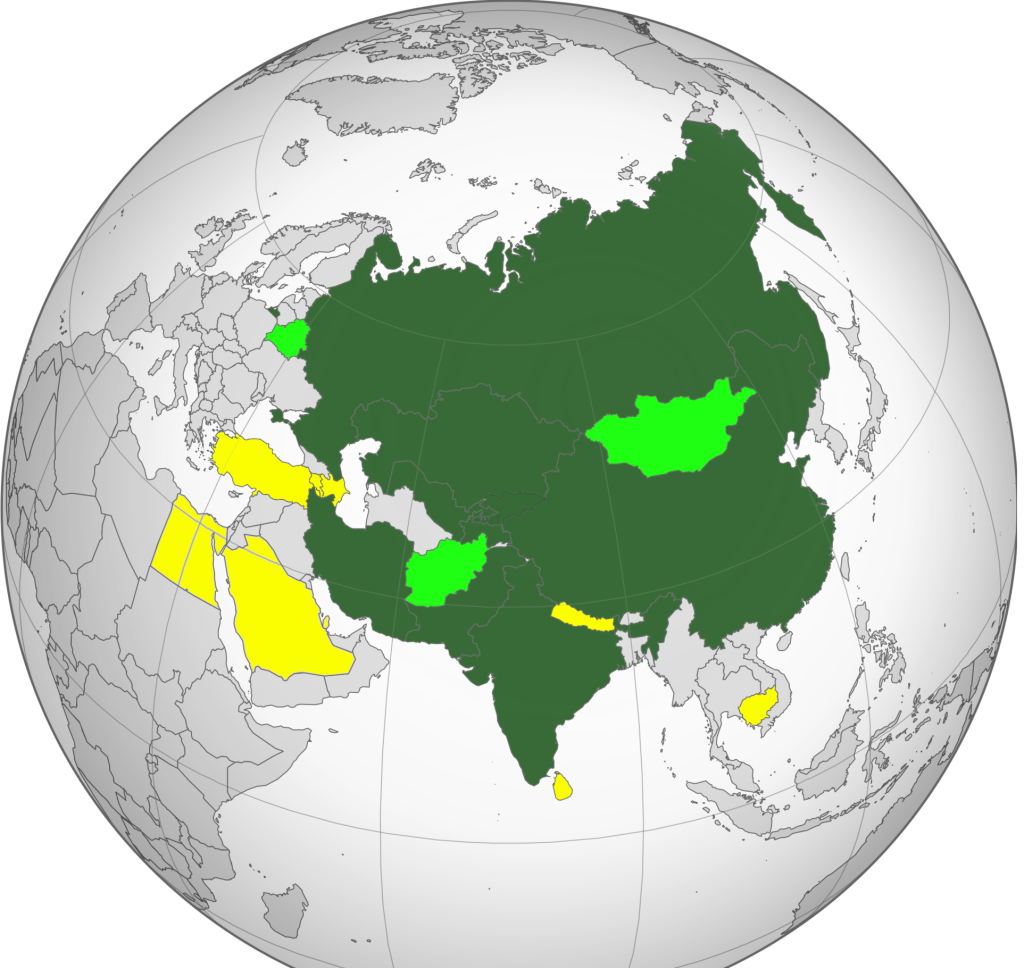
The Earth is one and undividable; the historical presence of several major empires over the past 45 centuries does not consist in a division but rather in a union around the same human, universalist-ecumenist ideals. From Sargon of Akkad (薩爾貢/سارگون) to the Qing, the Romanovs, the Ottomans and the Qajar, various empires incarnated these very old, common to all, and permanently cherished ideals in their respective locations. And by entering in endless commercial, cultural and spiritual exchanges, the great realms of Afro-Asia gave new dynamics to the magnificent soar made by the original civilizations that started in the beginning of the 4th millennium BCE in Mesopotamia (美索不达米亚/ بین النهرین) and Egypt. And the Silk-, Spice- and Frankincense Routes across Lands, Deserts and Seas, which are commonly called ‘the Silk Roads’, demonstrated very well the supreme human value, i.e. the Unity of Earth Life, removing in reality all the frontiers across the main landmass where the Mankind dwells. About:
https://zh.wikipedia.org/wiki/萨尔贡大帝
https://fa.wikipedia.org/wiki/سارگن_بزرگ
https://zh.wikipedia.org/wiki/美索不达米亚
https://fa.wikipedia.org/wiki/بین_النهرین
Starting with the late 15th and early 16th c., mankind was hit with an unprecedented plague that originated from a minor and insignificant peninsula, which had never been viewed as the center of a civilization or the location of a meritable kingdom by any civilized nation: Europe. I mainly refer to the current territories of Portugal, Spain, France, Holland, Belgium and England. These lands alone represent nowadays the historical meaning of what people define as “Europe” today.
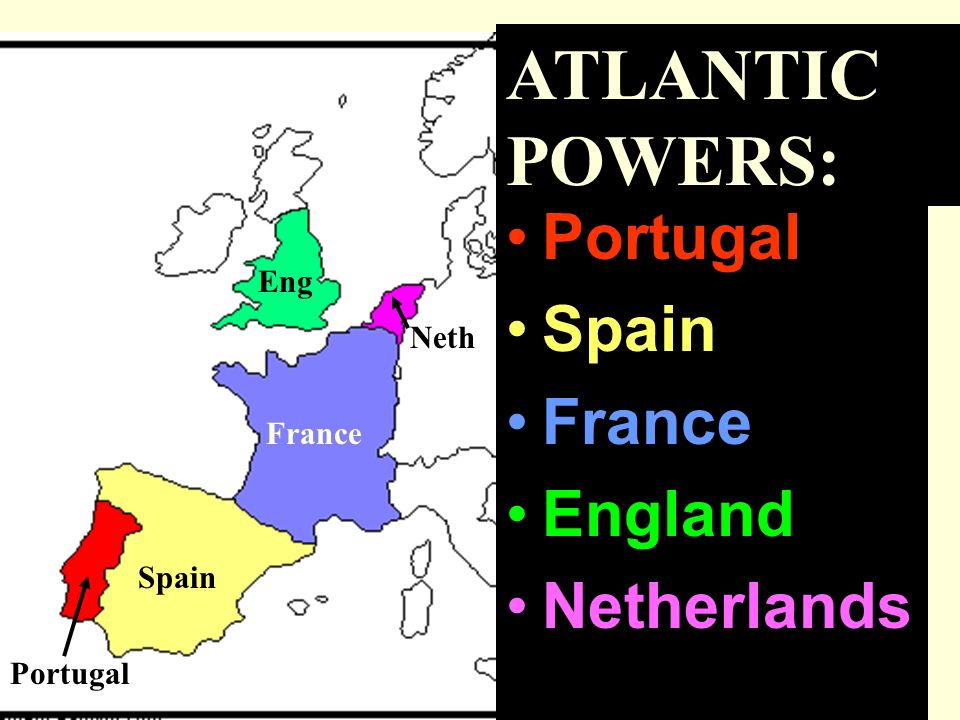
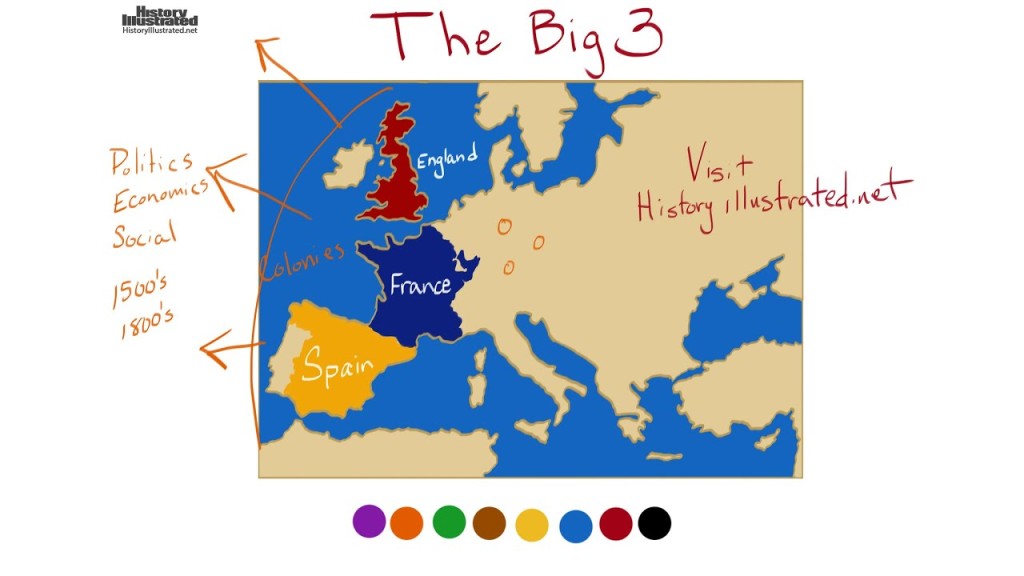
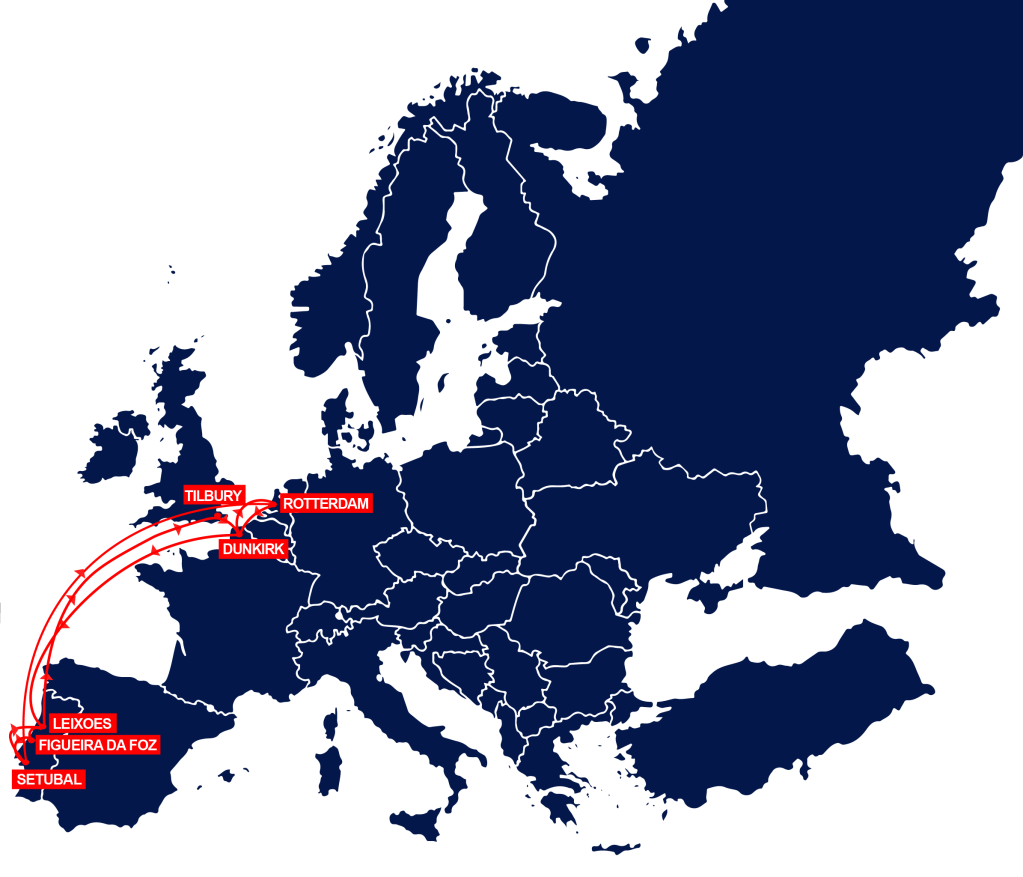
I. Europe is not a Continent
There is a troublesome hiatus in this regard, and it is necessary to make things clear. When people across the world think today of ‘Europe’ as a so-called continent (‘from the Atlantic to the Urals’), they only demonstrate to what great extent they have been deceived by the propaganda that emanated from the aforementioned modern states. This delusion of a ‘Europe – Continent’ does not exist in History; it’s a fake. The inhuman means of its propagation do not concern the scope of the present article, but surely involve the education, the publications, the mass media, the psychological operations (psy-ops), the so-called ‘political life’ (a low level farcical act), and the pseudo-culture that these states imposed at home and abroad.
Throughout the ages, Europe was never viewed as a ‘continent’ (in the sense we mean now); it did not actually consist in a continent, and -even worse- it was not the land of a civilization that impacted World History. Europe did not represent a unity of culture, tradition, faith, ancestry or language in any sense. In reality, all the useless elements of Asia and Africa ended up in Europe one way or another. And more tragi-comically for the well-propagated Fake History of Europe, the few civilized elements of Asia and Africa, which generated a rudimentary civilization on what is now called ‘European soil’ (Cyprus, Crete, Rome, Macedonia), did so by merely reproducing Asiatic and African values, arts, traditions, concepts and techniques and by bringing with them forms of spirituality, faith, moral, piety and virtue that were typically African or Asiatic in their original form.
What puts European colonials’ pseudo-historical propaganda beyond all intents and purposes is the fact that the very few civilized kingdoms, which were formed on what is now called ‘Europe’ did not identify themselves as ‘European’, did not view ‘Europe’ as a cultural unity or imperial entity, and did not care for the largest part of what we now call Europe, because simply it was worthless to them.
Alexander the Great of Macedonia, the absolute embodiment of Anti-Greek or Anti-Hellenic ruler, deployed enormous effort to succeed to the Achaemenid rulers of Iran. He was not the invader of many lands, as the modern European pseudo-historical propaganda projects him to be; he only conquered the entire Achaemenid Iran because he wanted to be an Asiatic king of kings. That’s why he deliberately made of Babylon his capital and of the Sogdian princess Roxanne his wife. But the central and northern part of the Balkan Peninsula, which would be easy to conquer, fully disinterested him. And the same is also valid for Southern Italy and Sicily where Ionians and Dorians had established colonies, let alone the useless plains of Gaul and the plateau of the Iberian Peninsula.
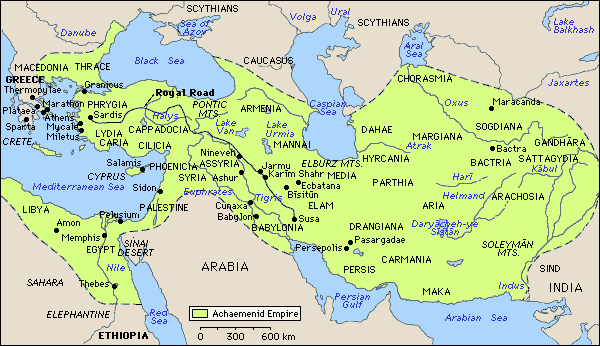

And the Roman Emperors repeatedly and convincingly proved that to them Egypt was more important than Gaul, Anatolia was more worthwhile than Iberia, and Syria was more significant than Britain. Romans undertook a naval expedition against Arabia Felix (today’s Aden), but not around the otherwise useless coasts of Sweden, Norway and Finland. Optimus princeps Trajan (98-117; 圖拉真/ تراژان), the greatest Roman emperor of all times, carried out military expeditions down to Characene (today’s southern Iraq and Kuwait) and up to Caucasus Albania (today’s Azerbaijan), but he did not have the slightest concern about the shores of today’s Poland and Estonia or the Azov Sea and the plains of Ukraine. Even more exemplarily, not one Roman Emperor bothered to invade Hibernia, today’s Ireland. About:
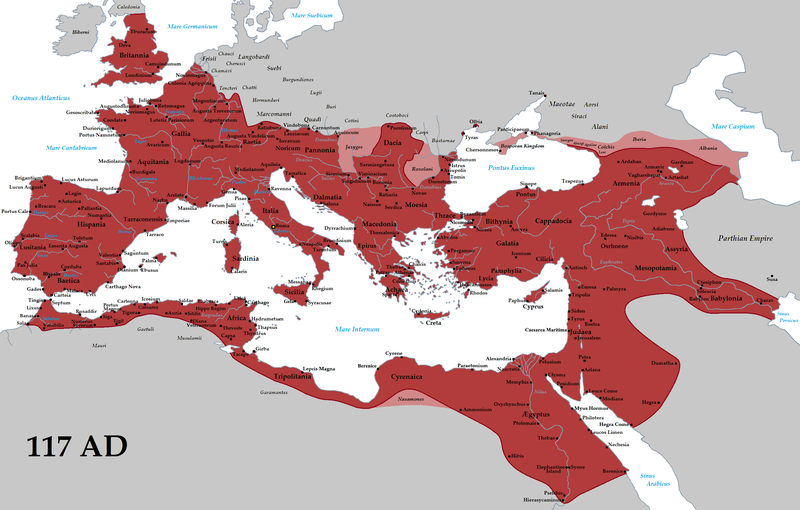
https://zh.wikipedia.org/wiki/圖拉真
https://fa.wikipedia.org/wiki/تراژان
Through conquests and treaties, the Romans controlled in Africa a definitely larger territory than in Europe, but today’s forged maps are systematically produced in a way to scrupulously conceal this historical reality. Even worse, scholarly Orientalist bibliography is kept far from the hands of the average public (and therefore not duly popularized in education manuals, publishing houses, and the mass media) in order not to reveal the overwhelming and cataclysmic diffusion of Oriental cults, concepts, virtues, values, lifestyles, faiths, esoteric rites, mythologies, worldviews, religions, arts, symbolisms, cosmogonies, cosmologies, systems of eschatology and messianic soteriology, rites, ceremonials, forms of spirituality, wisdom and erudition across all European territories of the Roman Empire, and also in other lands in Europe. Quite contrarily to the pseudo-historical dogma that the European colonial intellectuals produced by fallaciously naming an entire period ‘Hellenistic and Roman Times’, this same period is indeed ‘Orientalist and Orientalizing Times’, due to the above mentioned prevalence of Oriental cultures and civilizations throughout Europe.
II. Colonial Gangsters, Division of the World, and the East-West Divide
A fake concept for Europe and a bogus-historical dogma were not the only calamities with which the European kingdoms affected the rest of the world; in fact, they were only two and among the last. The six colonial kingdoms used their military edge to inflict great empires and primitive structures with all sorts of disaster, destruction, ruin, death, and unadulterated inhumanity. Settler colonialism and intellectual-spiritual-cultural-intellectual-educational-academic-religious colonialism started with the evil treaty of Tordesillas (1494; پیمان تردسییاس /托德西利亚斯条约) and they soon attained unprecedented levels of monstrosity with the evil deeds of the Spanish and the Portuguese conquistadors. The Spanish conquest of the Aztec Empire (1519-1521; فتح امپراتوری آزتک توسط اسپانیا /西班牙征服阿兹特克帝国) before exactly 500 years and the destruction of the highly civilized Aztec capital Tenochtitlan (特诺奇蒂特兰/ تنوختیتلان) only heralded what would follow. About:
https://zh.wikipedia.org/wiki/托德西利亚斯条约
https://fa.wikipedia.org/wiki/پیمان_تردسییاس
https://zh.wikipedia.org/wiki/西班牙征服阿兹特克帝国
https://zh.wikipedia.org/wiki/悲痛之夜
https://zh.wikipedia.org/wiki/特諾奇提特蘭
https://fa.wikipedia.org/wiki/فتح_امپراتوری_آزتک_توسط_اسپانیا

In the beginning of the 16th c., when such terribly inhuman crimes started being perpetrated by the first colonial empires, namely Spain and Portugal, there were still several human empires on Earth: in 1520, the Ottoman Empire covered a sizable territory in Western Asia, Northeastern Africa, and what is now called Southeastern Europe. In Western Africa, the Mali Empire (Manden Kurufaba) was still powerful, although superseded by the Songhai Empire.
In Iran, the Safavids were in power, controlling vast lands from Central Iraq to Herat to Baluchistan. The formidable Turanian-Mongolian Empire of the Golden Horde had split, but from today’s NE Balkans and Poland to the Pacific Ocean, a number of Muslim, Buddhist and Tengrist Turanian-Mongolian khanates controlled a really enormous territory. You needed only to speak Chagatay Turkic to cross (from west to east) the vast lands of the Qasim Khanate, the Crimean Khanate, the Nogai Horde, the Khanate of Kazan, the Astrakhan Khanate, the Uzbek Khanate, the Kazakh Khanate, the Khanate of Sibir (Siberia), the Turpan Khanate, the Yarkand Khanate, and the Four Oirat confederacy. In China, the Ming dynasty was still powerful, and in 1526, Timur’s (Tamerlane’s) great-great grandson Babur took power in Delhi, eliminating the earlier sultanates and founding the formidable Gurkanian Empire of South Asia, which is better known as the Mughal Empire.
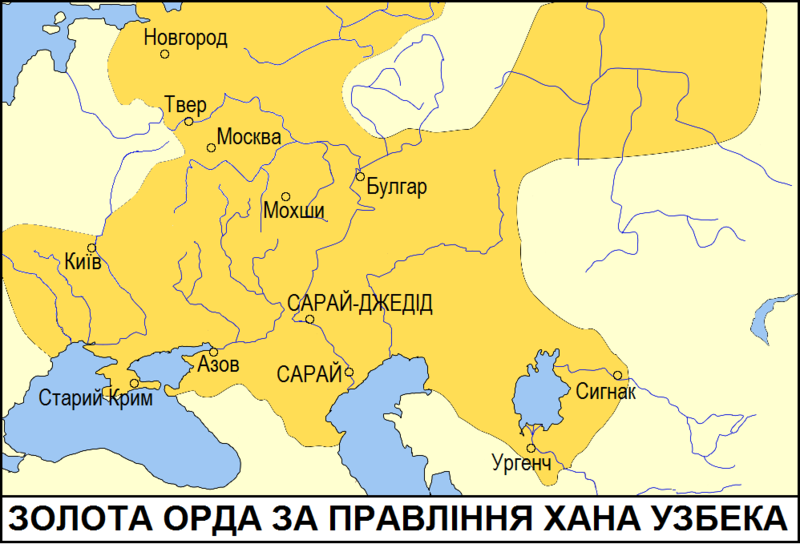
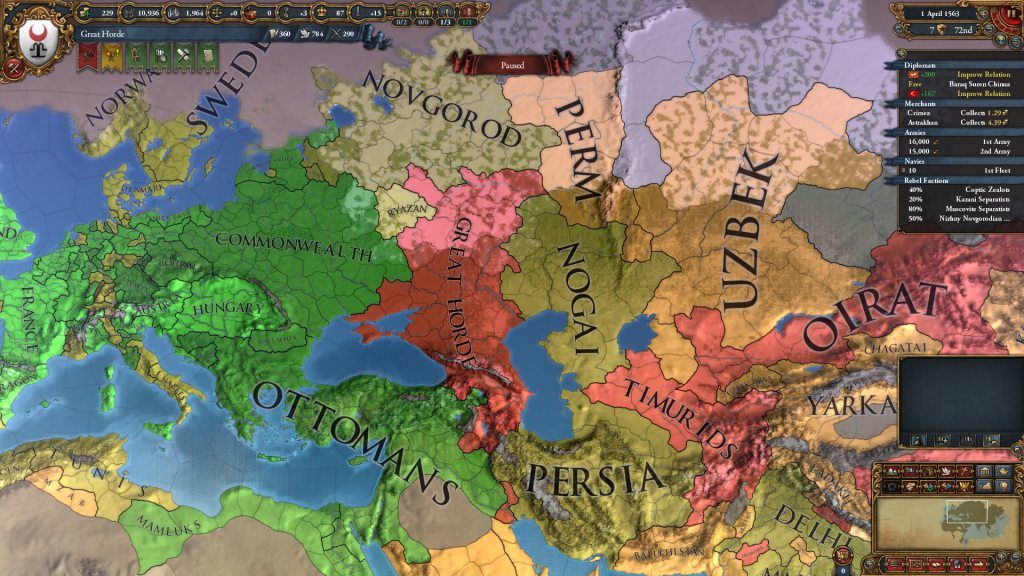
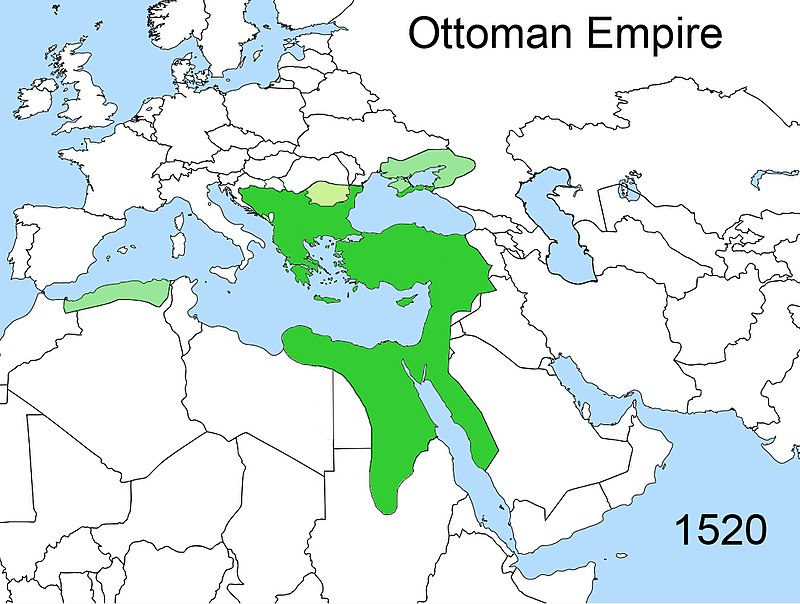
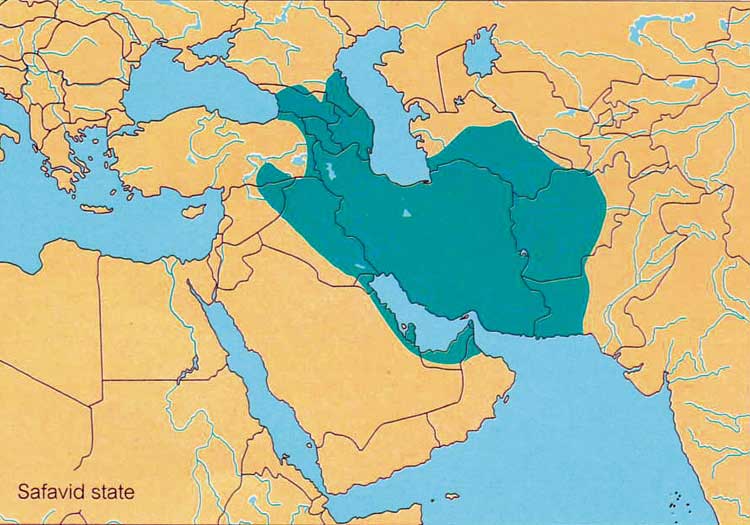
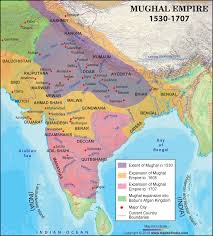
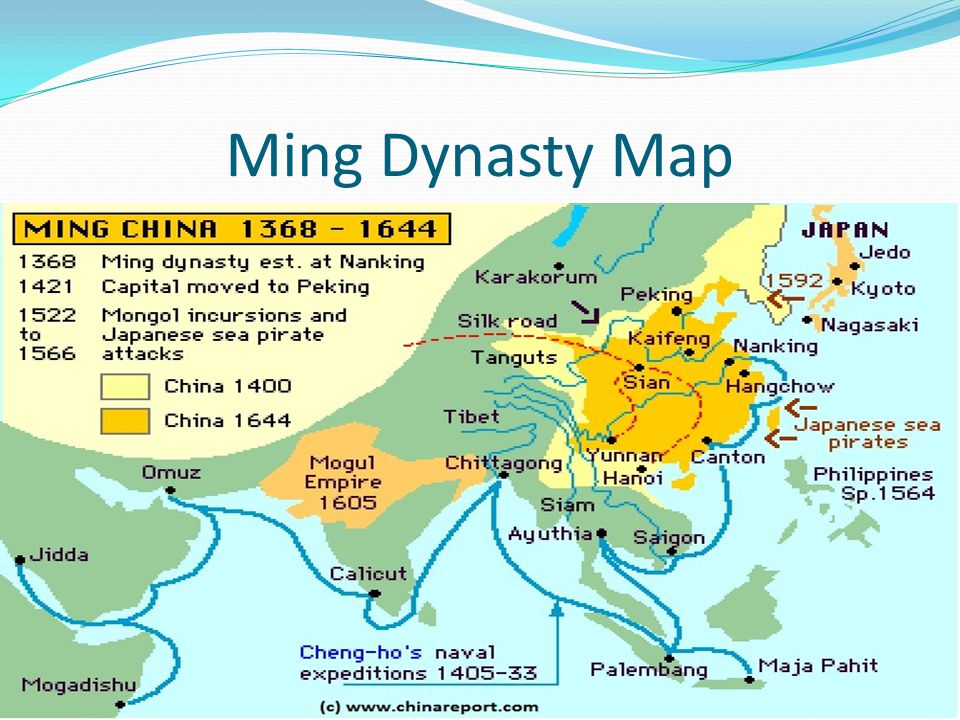
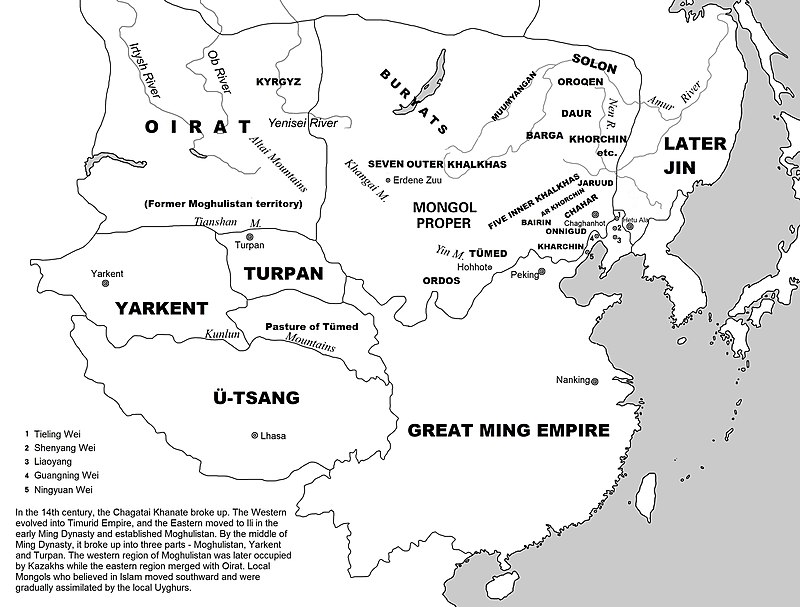
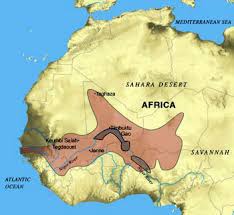
However, none of these empires’ human elites had an idea about the monstrous plans and the atrocious deeds of the then otherwise insignificant colonial barbarians, who aspired to conquer and disfigure the entire world through evil conspiracy, deceitful schemes, pernicious practices, and utterly inhuman deeds. The naivety of the Ottoman, Safavid, Mughal, and Ming emperors hinges on the fact that they did not studiously monitor the deeds of the colonial powers; furthermore, they mistook the European colonials for humans, and they did not make proper plans as to how to oppose them. The worst mistake of the great Asiatic and African empires was that they did not perceive the forthcoming encounter and clash in terms of long-term perspective, eschatological agenda, and human race extinction. Still, all these empires cherished traditions and beliefs that described the ‘evil’ extensively; but the Asiatic imperial elites failed to timely identify the European colonials as the evil par excellence.
Hitherto unconceivable concepts were then introduced, and the fallacious version of History, peremptorily produced by the European colonial elites, was instrumental in projecting onto the entire world the aberration of a division between East and West (or Orient and Occident). This forgery had a double headed axe’s use:
a) it made the colonial elites, academics, diplomats, administrators, army officers, soldiers, societies and average people in general utterly believe in their ‘proven’ superiority (whereas they are indeed multiply inferior, degenerate and inhuman), and
b) it convinced the targeted nations’ elites, academics, diplomats, administrators, army officers, soldiers, societies and average people in general that they were irrevocably inferior (whereas they are indeed superior, law-abiding and human in every sense).
III. Colonial Weaponization of Knowledge and Deceitful Schemes against the Entire Mankind (1494-1925)
None of the 16th c. great imperial establishments of Asia and Africa realized the extent of the colonial perversion, subversion and systematic falsification of the World History. Study, research, exploration, knowledge, erudition and wisdom were traits, activities, qualities and virtues invariably attested throughout millennia in Asia and Africa; however, the entire scope and the final target were always the same, namely the discovery of the truth and the improvement of understanding. There was never a claim of superiority and such an attitude or claim would appear as absurd; there was competition and quite often synergy.
All the intellectuals of Ionia, Attica, Aeolia and Macedonia willingly acknowledged that they went to Mesopotamia, Egypt and Iran to be educated in the vast temples- universities of the Oriental capitals, because there was only darkness in the multi-divided and backward, petty states of South Balkans. Scholars from all backgrounds and lands used to flock to Nineveh, to Babylon, to Iwnw (Heliopolis), and to Persepolis, and later to Alexandria, to Antioch, to Nisibis, to Ctesiphon, to Istakhr, to Gundishapur, and during Islamic times to Baghdad, to Cordoba, to Cairo, and to Samarqand without idiotic prejudices of ethnic or national, ancestral or racial superiority.
However, the weaponization of knowledge, as attested in magnificent colonial grand opuses like the famous Dutch “Hortus Malabaricus” (1669-1676) and the illustrious French “La Description de l’Égypte” (1809-1829), showed that the insidious European colonial adventure was not a simple military expedition, an economic exploitation, and a national enslavement, but it consisted in the total deprivation of the colonized nations from their natural and national resources, their urban and architectural environment, their traditional knowledge and cultural heritage, and their own identity.
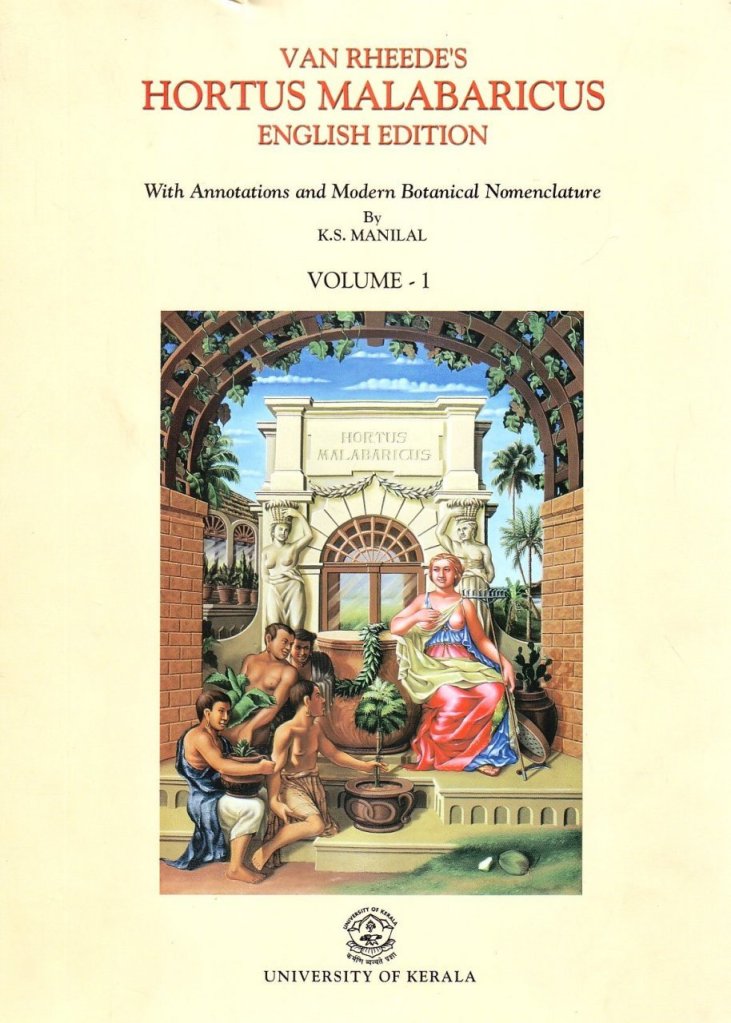

Even worse, the European colonial plague constituted a systematic and permanent projection of the false identity of subaltern and subservient humanoid onto all the civilized Asiatic and African humans; they had been civilized, but they were forced into abandoning their culture and civilization, into being barbarized and enslaved, and into being transformed into humanoid automatons to serve their barbarian masters, i.e. the inhuman monsters of Portugal, Spain, England, France, Holland and Belgium. European colonialism was therefore the complete, irreversible and ultimate dehumanization of the ‘Other’. In the History of Mankind, we can describe European colonialism as the Crime of Crimes.
Simply, in the case of Luso-Spanish, Dutch, and Anglo-French colonialism, the ‘Other’ was the entire world, and the vicious gangsters and forgers were the most worthless barbarians of Asia’s westernmost and most uncivilized peninsula. The result of the detrimental shock was evident: the Mughal Empire could not last more than 180 years after the publication of the “Hortus Malabaricus”, and the Ottoman Empire ceased to exist less than 100 years after the publication of the “Description de l’Égypte”. The morale of the story is easy to figure out: when the foreigners know ‘your’ possessions better than you do, you better ask the astrologers how much time is left before your state disappears.
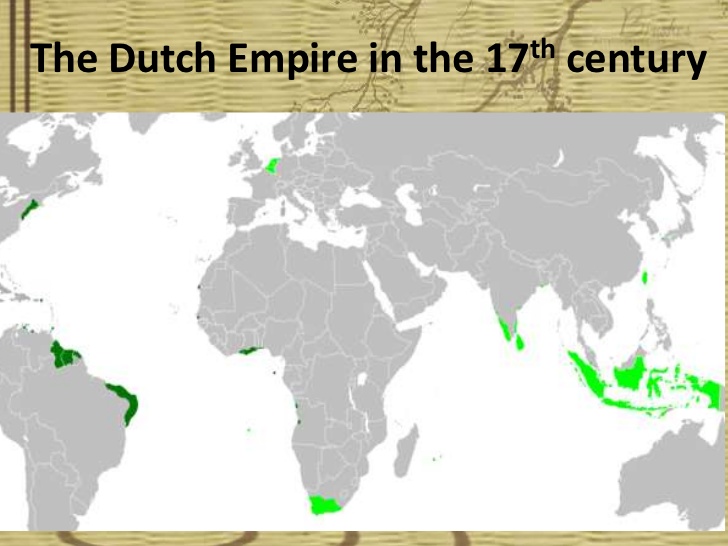
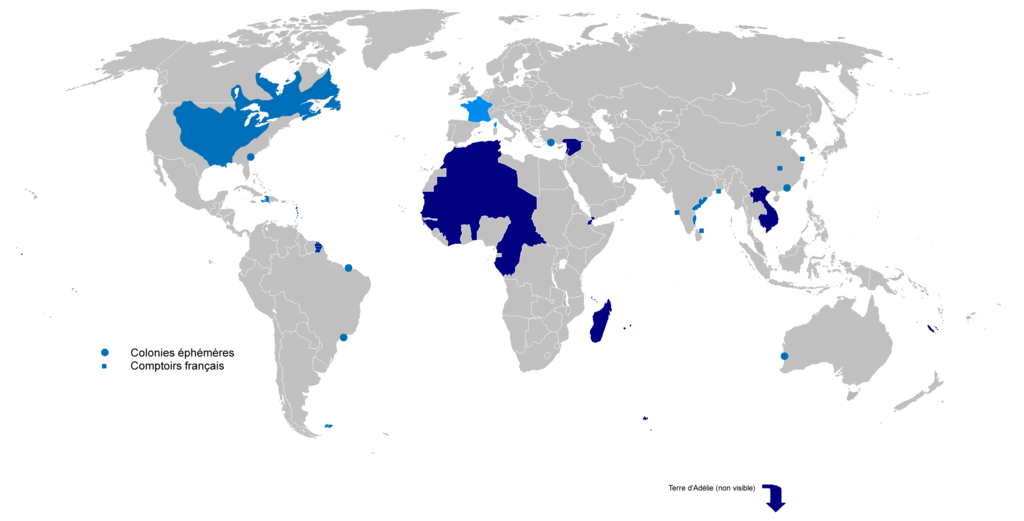
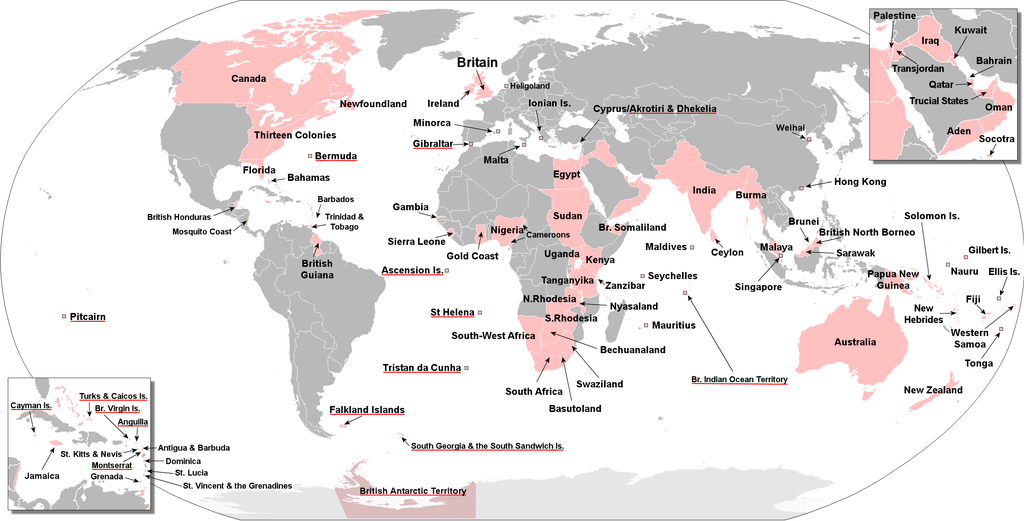
This is so because, if foreigners know ‘your’ possessions better than you do, this means that your state is already useless and dysfunctional. It also means that your religion is apparently worthless and your sacred texts evidently valueless; and this is true, not in the sense that the religion and the sacred texts in question are meritless, but because you lost their true meaning and therefore your understanding of them is nil.
IV. Naivety and Subsequent Fall of the Oriental Imperial Elites: Mughal Empire, Qing China, Czarist Russia, the Ottomans & Qajar Iran
It is interesting that the Opium Wars started only few years before the Mughal Empire disappeared. In 1839, the power of Bahadur Shah II was not greater than that of a puppet king in the Balkans or a tribal leader in Sub-Saharan Africa. Cornered among the Ottomans, the Russians, the English in ‘India’, and the English puppets in the pseudo-state of Afghanistan, the Iranian Qajar shahs could do nothing either to help the Chinese Qing or to organize their own defense with the much demanded final dissolution of Afghanistan and with an attack against British India.
It was too late for them; or perhaps one could say that for Imperial Iran, it was already too late in 1501, when the young shah Ismail Safavi, almost adored as the Messiah/Mahdi Incarnate in his early years, was spending his nights in fabulous banquets and sexual orgies, while the Luso-Spanish armadas were sailing across all oceans, which were literally prohibited to all Muslims, Chinese and the rest by virtue of the Treaty of Tordesillas of which no Iranian intelligence ever heard anything before the 20th c.
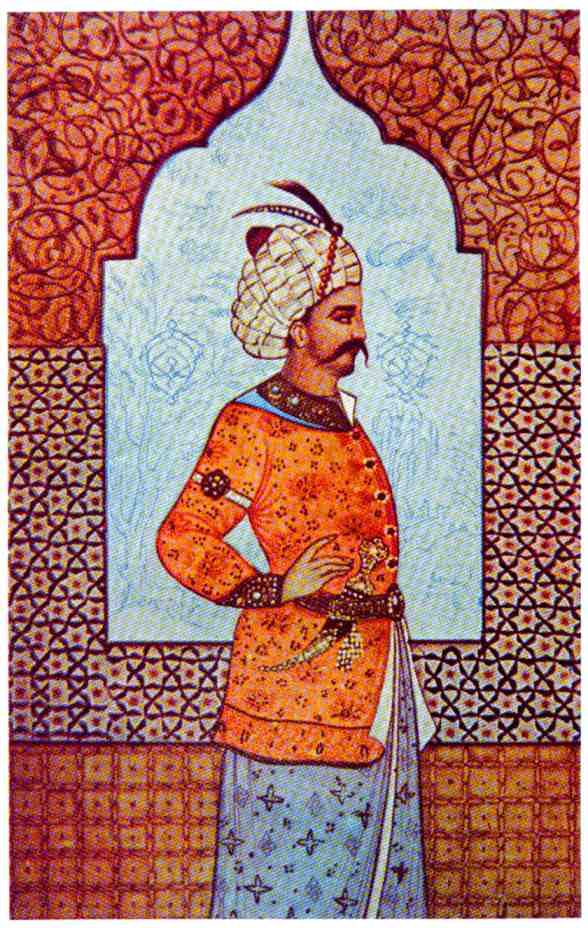
Under such circumstances, no one has a doubt why Fat′h-Ali Shah Qajar (reign: 1797-1834) did nothing else except losing one more war to the Russians and spending his long days and his even longer nights with his 1000+ concubines, thus laboriously producing no less than 100 children and ca. 600 grandchildren (although several trustworthy historical sources include even higher numbers of heirs). The same is valid for the pious but stupid Ottomans whose best way of correcting a mistake was to commit another.
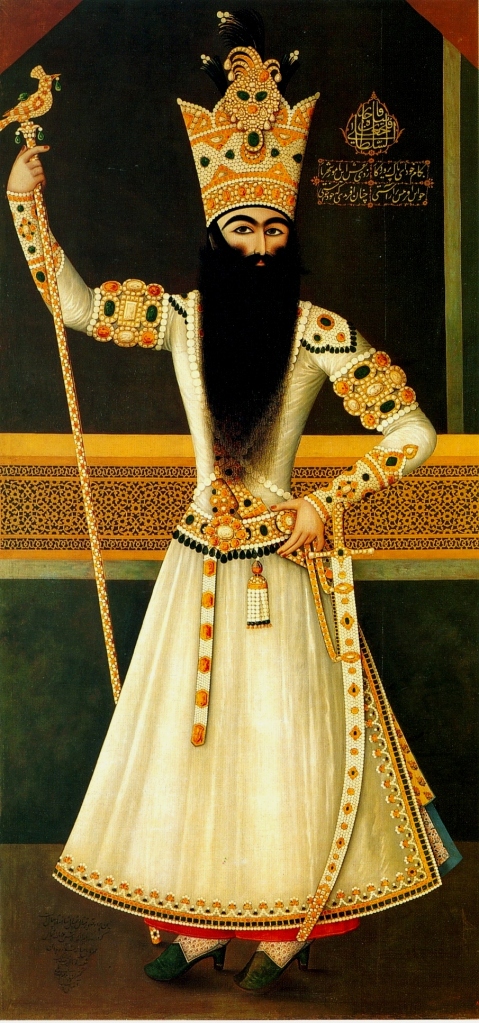
And what is the difference between the last Mughal (Bahadur Shah II) and the last Ottoman (Vahdettin)? Having got a kick in the ass, the former died (1862) in Rangoon (Myanmar) where he was exiled; having experienced the same miserable fate, the latter died in exile (1926), in Sanremo (Italy); either in the East or in the West, an exile is an exile. It is therefore a permanent shame and an irrevocable disgrace. No one can raise a claim to Neo-Safavism, Neo-Mughalism or Neo-Ottomanism without being similarly destroyed and eradicated from the surface of the Earth. And quite instructively, today’s China does not play into the Neo-Qing game; neither does Republican Russia develop Neo-Czarist delusions.

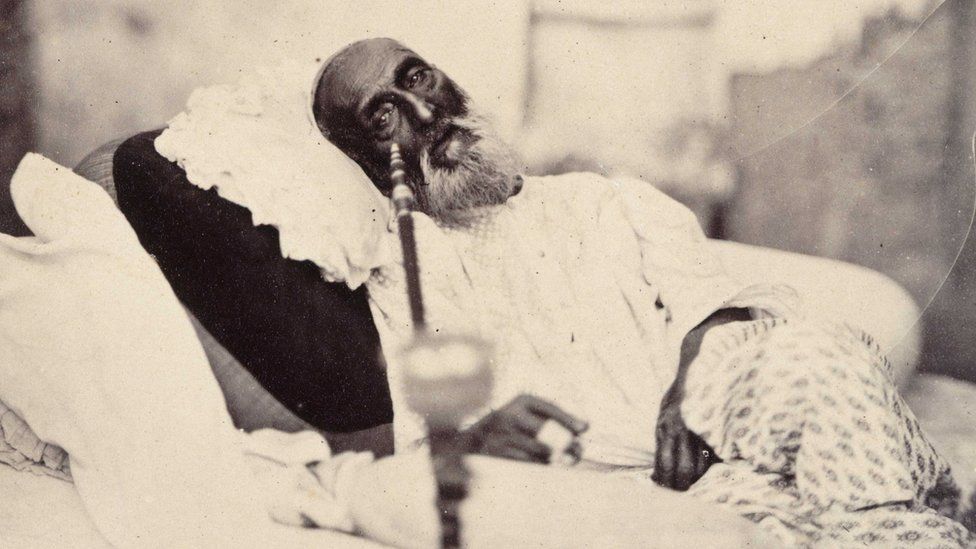
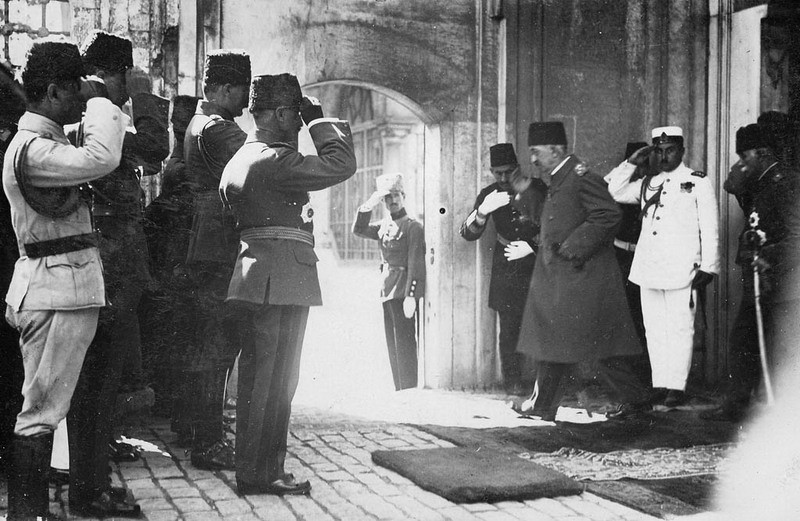
The Opium Wars did not signal only the beginning of the European-American-Japanese colonization of China; they also heralded the beginning of the end for the Romanov. Yet, it was a period of stability for Russia – or so it seemed. From 1825 until 1881, when Alexander II was assassinated at the age of 63, Russia was ruled by only two czars, namely Nicholas I and his son. But there was no foresight, no real study of the European colonials, and no identity clarity.
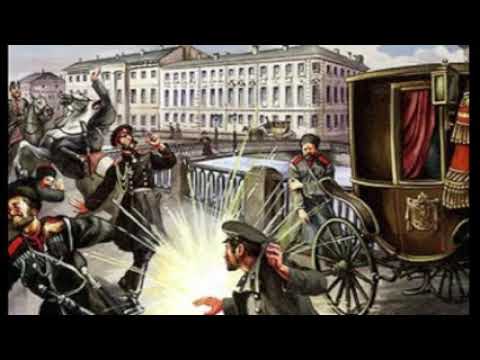

Few people understand that only identity clarity can offer success in the governance of a realm and in the status it rejoices at the international level; on the contrary, identity confusion leads mathematically to defeat and destruction. Imperial Russia was in fact a Western European colonial fabrication – not by means of military invasion but by virtue of colonial stratagems. Colonial investors, agents and diplomats bribed, corrupted and utilized Russian noblemen and royals, and through subtle machinations convinced the Romanovs that they were a ‘European’ power. Thus, the Anglo-French colonials pulled the Russians into their historical forgery, persuaded them that the ‘Russians’ were ‘Indo-Europeans’, dragged them into the fallacious scheme ‘Christianity vs. Islam’ (whereas the English, the Dutch and the French elites were virulently anti-Christian), and engaged them in the same colonial competition (not anymore “Scramble for Africa” but for the entire world). However, all these developments were calamitous for Russia, and finally they led only to the demise of the entire dynasty.
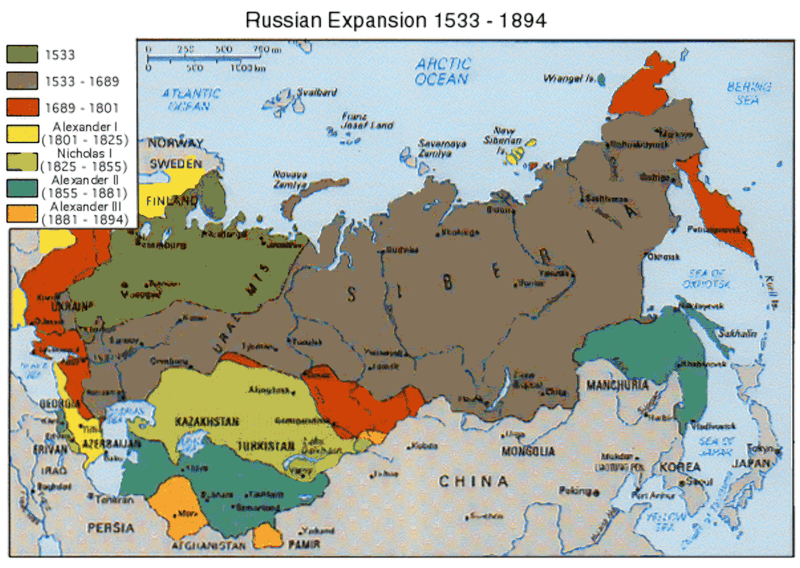
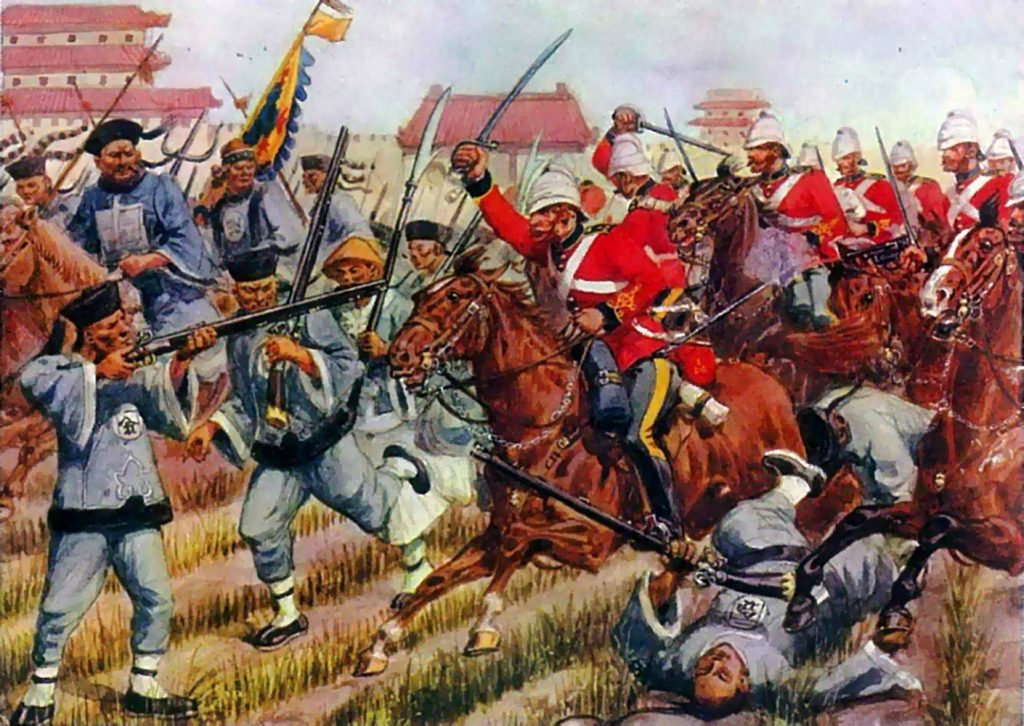
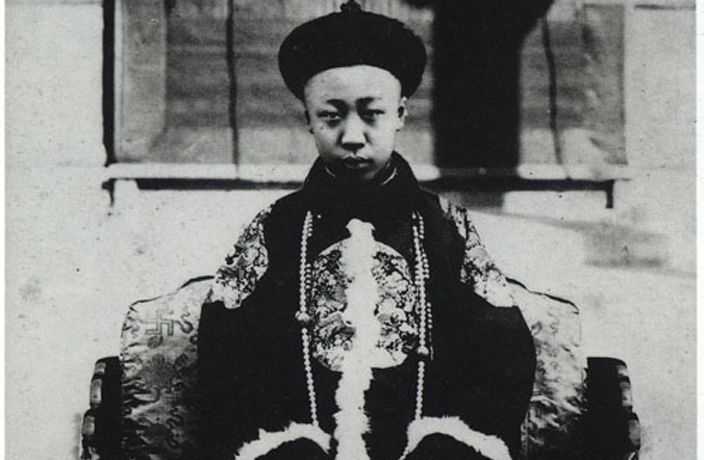
As a virtually Turanian, Asiatic and Oriental superpower (like the Golden Horde), Russia had to support China in the Opium Wars, by making an alliance with Iran and by attacking Afghanistan and invading British India. But when you are an Asiatic and you think you are a European, you cannot possibly opt for the correct decision. That’s why identity clarity matters above all, when it comes to national survival. Identity recognition is a very serious and at times painful process; usually, you are neither what you think (are taught that) you are, nor what you would like to be. Only a very neutral and objective/objectivist standpoint toward past atrocities and a strict detachment from national/nationalist/nationalistic narratives, present dreams, and wishful thinking can offer you the key to your identity.
Similarly, during WW I, Russia had to be the ally of Germany, Austria-Hungary, the Ottoman Empire, Japan and Iran against France and England. In such a case, having no apparent reason to keep significant military forces in their western borders, the Russians could support the Ottomans against the English in Mesopotamia, Palestine and Hejaz, while three (3) million Russian soldiers with their Iranian allies could eliminate the fake state of Afghanistan and march on Delhi, invading the English colony and controlling the southern parts of Asia.
States function like human beings; the same rules apply to an individual and to a group of individuals. When someone does not do the correct thing, a mishappening takes always place. Wrong choices are constantly met with disastrous results; It was very unfortunate that the Russians participated with France and England in the vicious dismemberment of Qing China and that, in 1858-1860, through several ‘unequal treaties’ (the expression is an acknowledged historical term), they detached Outer Manchuria (外滿洲 / Приамурье). That’s why less than 60 years after Alexander II did this injustice to China, his grandson Nicholas II was deposed and assassinated. Alexander II was assassinated too (1881); but after his tragic death, Holy Russia still continued to exist. However, after his grandson’s assassination (1918), Holy Russia was no more. The ‘holy’ had been progressively but completely desecrated through the alliance with England and France.
V. Intellectual Colonialism and Orientalism
While the intellectual elites of the European colonial powers composed their false historical dogma on the basis of the intellectual-academic-cultural movements that we now call ‘Renaissance’, ‘Classicism’, and ‘Enlightenment’, arbitrarily distorting the past of their own lands, they also misinterpreted the History of Ancient Rome and the Roman Empire that they –also deliberately and erroneously- associated with them; it was a real usurpation of another nation’s past and cultural heritage. Then, peremptorily selecting earlier rejected philosophers of Ionia, worthless and forgotten politicians of Attica, long dismissed Aeolian poets, self-styled historians of Carian origin, authors of obscure past and unknown ancestry, repudiated tragedians and duly banished comedians, as well as forms of decayed lifestyle involving pedophilia and homosexuality, ritualistic orgies, and other absolutely pathetic and barbarian practices and traditions of various South Balkan tribes, they fabricated -out of thin air- what we now call ‘Ancient Greece’.
Ancient Greece never existed as a historical entity in the sense Ancient Phoenicia did. The royal divisions of the Ancient Phoenicians did not impact their culture and values that are now recognized for their coherence, consistency and uniformity. Quite contrarily, the disparate cultural elements that appear in the historical sources, the divergent religious beliefs and faithless lifestyles that are documented by means of archaeological evidence, and the incessant conflicts that pitched one ‘Ancient Greek’ city against another bear witness to the undeniable reality that ‘Ancient Greece’ never existed. In case, during the Antiquity and the Christian Times, the name had only a geographical connotation. In Islamic Times, it was duly forgotten. It is one more colonial fabrication (just like the European ‘Continent’!) geared to be an element of destructive propaganda and a double headed axe. This is what we now call ‘Hellenism’, i.e. a racist ghost.
Hitherto unconceivable concepts were then introduced, and the fallacious version of History, peremptorily produced by the European colonial elites, was instrumental in projecting onto the entire world the aberration of a division between East and West as per which
a) all the positive values, virtues, elements, contributions and exploits were delivered by the Ancient Greeks and Romans (the so-called ‘West’),
whereas
b) all the negative values, sins, disorders, embarrassments, and shames were caused by all the Ancient Oriental nations, the Eastern Christians of all denominations (Orthodox, Miaphysitic/Monophysitic, and Nestorian), and all the Muslims (the so-called ‘East’).
It goes without saying that the latter (b) were (or rather ‘had to be’) ‘lower’ than the former (a)!!
To add insult to injury, the colonial academic elites turned their intellectual and scientific robbery of the colonized nations’ natural and national resources, urban and architectural environment, traditional knowledge, cultural heritage, and diachronic identity into an unprecedentedly enormous academic fallacy. Colonial explorers, epigraphists, linguists, archaeologists, philologists and historians deciphered dozens of ancient scripts, surveyed and excavated dozens of thousands of archaeological sites, penned millions of speeches, articles, manuals and books, and filled thousands of libraries and museums with an enormous documentation which consists basically in a calamitous, venomous and discriminatory misrepresentation of the historical past of Asia and Africa. This enormous falsehood is now called Orientalism. All the discoveries, analyses, syntheses, conclusions and interpretations of the colonial Orientalist scholars were published and popularized only in a way to preserve the earlier constituted pseudo-historical dogma intact; this means automatically that vast part of the said documentation was concealed far from the average public.
There are many deliberately erroneous aspects of Orientalism; it goes beyond the scope of the present article to refute the atrocities of the Western colonial Orientalists. However, I must herewith mention a persistent and critical dimension of historical falsification that concerns the use of the forged World History that the Western colonials make.
When you initially write and teach a ‘World History’, based on historical sources that cover the period 500 BCE – 1500 CE and then, at a later stage, you discover numerous anterior sources, which reveal to you (with respect to the outright majority of the world’s historical nations) diverse aspects of spiritual exploration, intellectual endeavor, scientific research, cultural life, artistic genius, economic activity, state governance, public administration, military expedition, imperial conceptualization, and interstate relations that cover 2-3 millennia of History (which antedate the period you initially knew about), then you have to amend all your earlier criteria, preconceived ideas, measures of evaluation, moral standards, virtues, world views, concepts, and standpoints, values, theories, ideas, assumptions and conclusions, because they are -most probably- entirely wrong.
When you discover millions of texts in several languages and you get a clear idea of how life was 2000 or 3000 years before the moment you -arbitrarily and due to lack of sources- had taken as the ‘beginning of History’, then everything that you ‘knew’ (before the astounding discovery and the subsequent enrichment of knowledge) is wiped out, obliterated, and considered as obsolete once forever.
If we eventually suppose that the peremptory aberrations and the arbitrary conceptualizations of the Renaissance European colonial intellectuals were not malignant schemes providing only for the enslavement of the entire Mankind but mere errors and erroneous assumptions, then we can safely conclude that all these earlier aberrations and conceptualizations had to be immediately, completely and adequately amended in the light of the enormous amount of evidence unearthed, deciphered, studied, analyzed and interpreted.
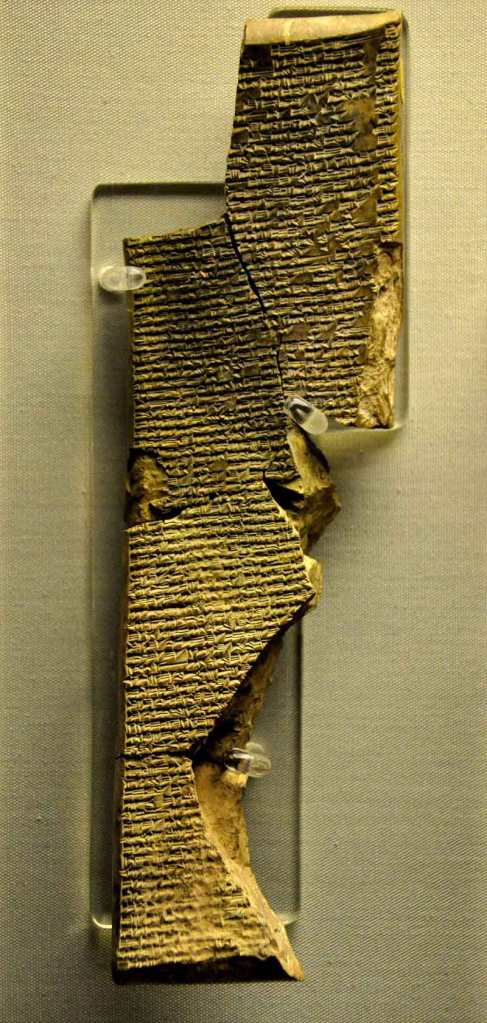

The fact that this development did not happen at all and the evident practice that today’s West European and North American colonial academics and intellectuals continue diffusing the same, preconceived and widely imposed falsehood are enough to convince all persons of good intentions that the European pseudo-historical dogma has always been deliberately and inanely false from A to Z.
VI. The Fake Science of Geopolitics
Since the misrepresentation of the ‘Other’ reached such extent, it was normal for the colonial elites to develop additional nonsensical theories, which were laboriously portrayed as ‘scientific disciplines’. In fact, they were merely wishful thinking defense mechanisms that lacked historicity, objectivity, authenticity, veracity and congruity; in brief, they were tools of propaganda and means to fool the eye. One of these arbitrary schemes is what people now call ‘geopolitics’. There is no geopolitics in any sense, and there can’t be any; the term is totally meaningless and self-contradictory.
Coined by the Swedish political scientist and politician Rudolf Kjellén (1864-1922), the term ‘Geopolitics’ (initially Geopolitik in Swedish and German) contains two linguistic elements in striking contradiction to one another. Being composed of two Ancient Greek words (γη+πολιτική/ge+politiki) that mean ‘earth’ (or ‘land’) and ‘politics’, the term was geared to purportedly describe “the study of the effects of Earth’s geography (human and physical) on politics and international relations”.
This assumption raises many points; first, ‘earth’ (γη) is not ‘geography’; second, ‘geography’ (lit. description of the earth) was already an ancient science that the Ancient Greeks and Romans learned from the Babylonians, the Phoenicians, the Egyptians and other ancient and highly civilized nations. Modern geography is a scientific discipline dedicated “to the study of the lands, features, inhabitants, and phenomena of the Earth and planets”, but Modern Geography and Ancient Geography are two completely different disciplines, methods, concepts and endeavors. This is still preliminary.
The main problem of the term ‘Geopolitics’ (‘earth’ and ‘politics’) is precisely that the Earth (or land) is unrelated to politics, and actually no politics can possibly apply to the Earth or most of the surface of the Earth. ‘Politics’ constitutes a very specific and historically marginal system of governance that can concern only a city-state (polis). There is no ‘politics’ in an empire, a kingdom, a nomad confederation, and a sizable realm of any racial, ethnic, linguistic, cultural and spiritual background. There was no ‘politics’ in Ancient Egypt, Akkad, Assyria, Babylonia, Hittite Anatolia, Cush (Ancient Sudan), Carthage, Iran, Yemen, Turan, and China. There was no ‘politics’ in any Balkan or Anatolian kingdom; and there was no ‘politics’ in Seleucid Syria, Attalid Pergamum, Bactria, Sogdia or Kushan.
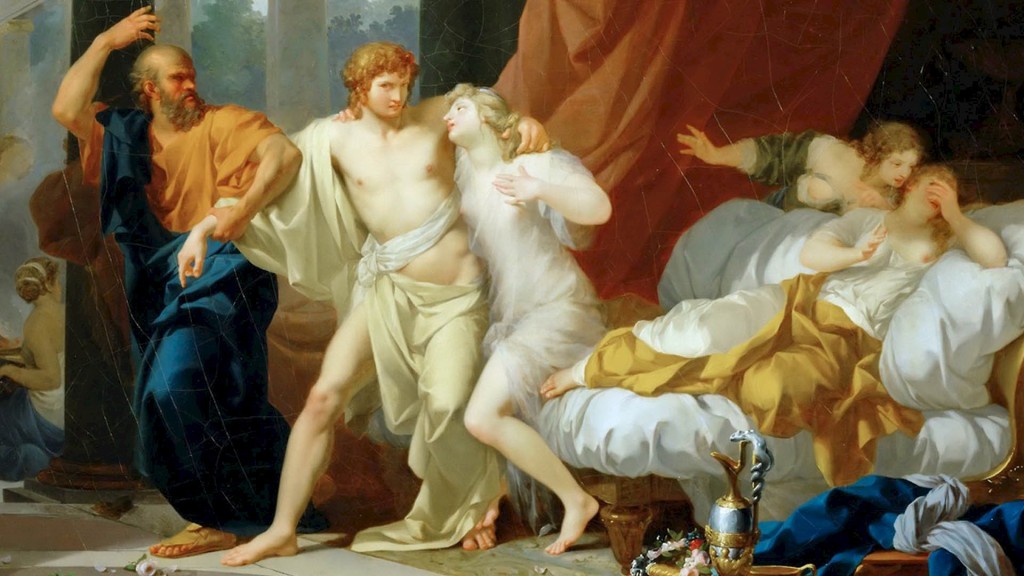
Ancient Rome offers a good example in this regard; there was no politics in the Kingdom of Rome (Regnum Romanum; 753–509 BCE); there was politics in the Roman Republic (Senatus Populusque Romanus; 509-27 BCE); and there was no more politics in the Roman Empire (Imperium Romanum; 27 BCE-476 CE).
Subsequently, there was no ‘politics’ in the Eastern Roman Empire, in the Sassanid Empire of Iran, in the Gupta Empire, in Han, Tang, Yuan or Ming China, in the Islamic caliphates, sultanates, emirates, and khanates, in the Christian kingdoms of Western Europe or in any other nomadic confederation, realm or dominion. No system of governance can possibly be called ‘politics’ except for the republican administration of a city-state with democratic participation in the rule.
Certainly, the currently prevailing confusion makes everyone imagine that politics means governance and vice versa, but this represents only one more aspect of the multifaceted colonial propaganda that was diffused worldwide during the 19th and the 20th c. Useless to add, for any sizable realm larger than a modest self-governed city, there is no ‘politics’ today; the system is a tyranny disguised as ‘republic’ or ‘democracy’ and there cannot be any comparison between today’s fake politics and Ancient Roman or Athenian politics, except in terms of corruption, evil character, pernicious attitude, and social disorder.
So, to return to the initial point, “the effects of Earth’s geography (human and physical) on politics and international relations” (as per another definition of the fake term) should be rather called “geo-imperium”, “geo-tyranny”, “geo-dictatum” or “geo-control”; perhaps the best term would be “geo-sovereignty”. This is also proven by the deplorable contents that all the Western colonial academics, intelligence and military experts, diplomats and intellectuals invariably gave to the fake term ‘geo-politics’. Suffice it that one studies these ‘contents’ to realize that ‘geo-politics’ is an ahistorical mixture of criminal colonial targets with incessant distortions of the historical past. It has nothing to do with the ‘governance of one city with non-hereditary rule.
Alfred Thayer Mahan (1840–1914) came up with a debased theory, as per which the Ottoman Empire, Qajar Iran, Qing China, Japan, and the colonial pseudo-state of Afghanistan were facing existential threats from the so-called ‘two monsters’, namely England and Russia. This nonsense can only be the invention of a cruel American pro-French/pro-Republican colonial, who felt that -despite France’s disproportionate control of African lands- Paris did not play an important role in the so-called ‘Big Game’ between Russia and England. Had the Vietnamese Nguyen dynasty survived the French colonial onslaught, Mahan would surely have invented a much larger ‘zone of threatened realms’ (probably between the 10th and the 40th parallels north, not only between the 30th and the 40th parallels north)! He presented himself as a Christian, but he was a Biblical racist and therefore a pseudo-Christian.
Until today, Halford Mackinder (1861-1947) is viewed as the principal heresiarch of the geo-political fallacy. All that he did was to draw fake lines, which did not represent historical realities in any sense. His long celebrated ‘The Geographical Pivot of History’ (1904) reflected the harsh antagonism of German, Russian and English scholars and explorers in parts of today’s Central Asia and Western China. Many people read this book, but do not know that it was written immediately after the first expedition (1900-1901) of Sir Marc Aurel Stein (1862-1943) in Central Asia, during which the Hungarian Jewish-English explorer and British Intelligence officer carried out surface surveys, extensive reconnaissance, and excavations at Dandan Oilik, an oasis of the Taklamakan Desert. Mackinder’s book was published only months after Aurel Stein’s ‘Sand-Buried Ruins of Khotan Personal Narrative of a Journey of Archaeological & Geographical Exploration in Chinese Turkestan’ (1903).
Mackinder’s texts reflect colonial concepts, diplomatic efforts, and Orientalist terms and explorations; at the time, Aurel Stein was still using currently obsolete terms like ‘Serindia’ (China, Indochina and India viewed as an entity) and ‘Innermost Asia’ (Central Asia, Western China, Mongolia, Central and Eastern Siberia) because his time was a period of pioneering research in those territories that had not been visited by Western European colonials until then. At those days, colonial Orientalists had already gathered enough evidence to fully document the History of Turan and to understand how internal Turanian (Turkic and Mongolian) conflicts generated endless historical waves of immigrants either to the South (in today’s China) or to the West (in today’s Central Siberia, Central Asia, Iran, Western Siberia, Eastern and Central Europe). This reality is hidden behind Mackinder’s concept of ‘pivot’ that he defined as the central point in his otherwise nonexistent ‘World-island’. However, his pivot area was not historically pivotal. Worse, it never existed as a geo-historical entity!
Even if we take the Afanasievo culture (3300=2500 BCE; in the Altai Mountains) and the Andronovo culture (2000-900 BCE; north of the Aral Lake) as signs of early and successive migratory waves, we cannot afford to define today’s NE Siberia, Central Siberia, Central Asia, and Iran’s northern and central parts as the real geographical ‘pivot’ of History. Quite contrarily, pivotal for the World History was the so-called ‘Fertile Crescent’ – another pseudo-historical term that denotes Mesopotamia, Syro-Palestine and Egypt. It is from there that civilization spread to the rest of the world. But in 1904, these regions were controlled by the Ottomans (Mesopotamia and Syro-Palestine) and the Anglo-French colonials (Egypt), and there was not much at stake. Contrarily, in the lands that Mackinder described as ‘pivot’, the possible limits of a) the German involvement, b) the English infiltration, c) the Russian advance, and d) the Chinese presence were unknown, whereas all borders were essentially ill-defined.
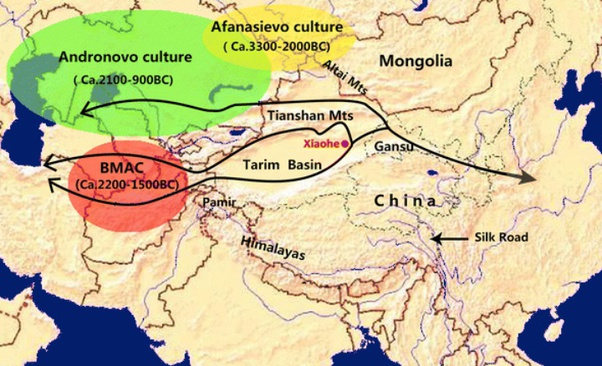
Last, Mackinder’s tripartite division of the world {into World-Island, offshore islands (England and Japan), and outlying islands (America and Oceania)} is nonsensical either at the historical or the geographical level. Why didn’t he include Indonesia? Probably because it was already colonized by the Dutch and nothing was at stake there. Inane!
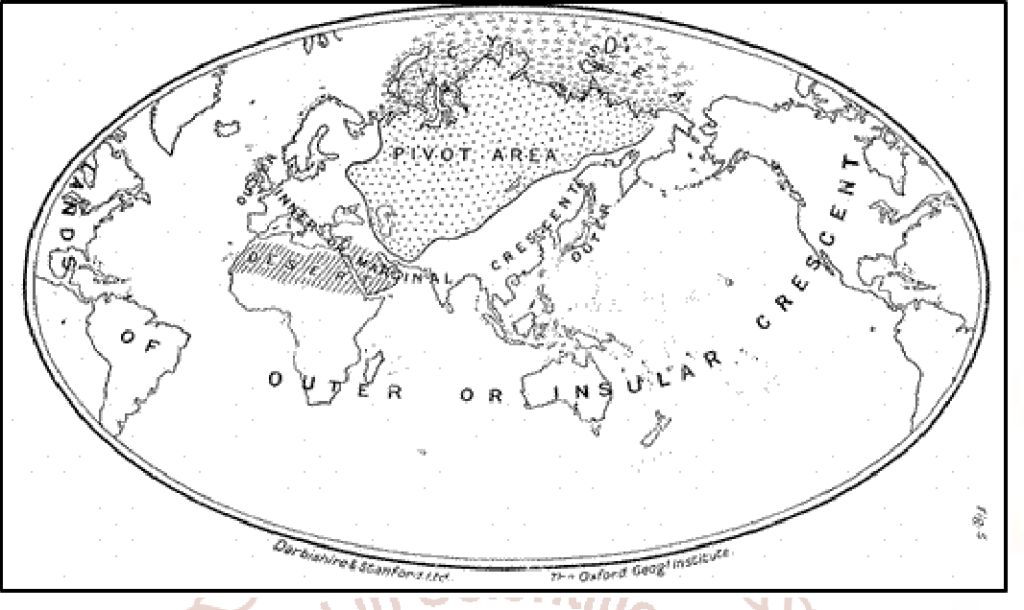
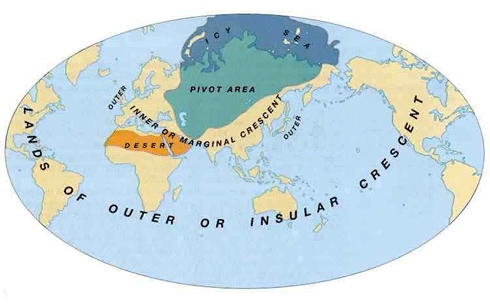
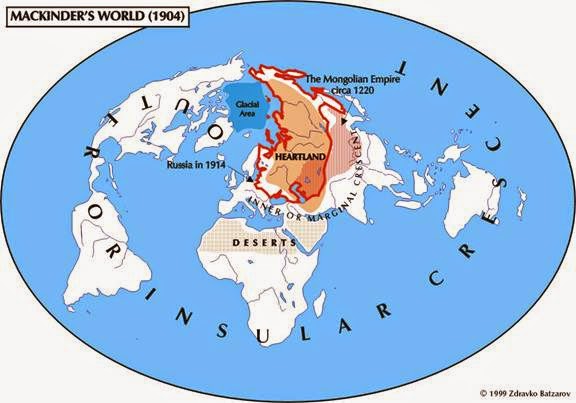
On the other hand, Karl Haushofer (1869-1946) produced a geopolitical system that reflected many historical concepts and approaches to imperial governance. In strong contrast with Mackinder’s bizarre abstractions and ahistorical maps, Haushofer’s ideas appear sound and solid. But they are not … ‘geopolitical’! They represent merely a traditional imperial worldview, and they constitute the basics of the state prosperity and expansion as documented in 18th dynasty Kemet (Egypt), Sargonid Assyria, Achaemenid or Sassanid Iran, Han or Tang China, the Abbasid caliphate, and the Timurid Empire.
As a matter of fact, there is nothing ‘new’ or ‘modern’ in Haushofer’s ideas; they are correct, but they constitute the antipodes of the colonial nonsense that we nowadays call ‘geo-politics’. I simply wonder why the distinguished German scholar did not have the courage to decry ‘geo-politics’ as a fake science and to portray the Anglo-Saxon colonial paranoia as the supreme danger for the Mankind’s survival.
The notion of the organic state, the theory of Lebensraum, the need for self-sufficiency-self-reliance (autarky), and the division of the world into spheres of influence or distinct realms (pan-regions) can be found in cuneiform, hieroglyphic, Chinese, Middle Persian, Arabic and Farsi historical sources – millennia before Haushofer put them down on a piece of paper. But they were not described as ‘geopolitical notions’; they were viewed as basics of imperial governance. The only element that did not exist during the Antiquity and the Christian-Islamic times is the delusion of dichotomy between land power and sea power. But in this, Haushofer was apparently influenced by those whom he had to firmly oppose but failed to do so: his Anglo-Saxon opponents.
As it could be expected, on the earlier basis of ahistorical sketches and arbitrary aberrations, further fallacies and false notions were progressively added. Nicholas Spykman (1893-1943) expanded the erroneous concept as per which today’s NE Siberia, Central Siberia, Central Asia, and Iran’s northern and central parts are the ‘pivotal’ area. He then peremptorily and therefore erroneously divided the Afro-Asiatic landmass into a) the so-called ‘heartland’ and b) the ‘rimland’. These jolly delusions never existed in the History of Mankind; they actually do not consist in any worthwhile synthesis or serious interpretation of the existing historical sources. They only reflect the Anglo-Saxon regimes’ final goals, and the evil methods that they intend to use in order to achieve them; in other words, one can surely describe them as ‘wishful thinking’ and properly decry them as the most serious threat against the entire Mankind.
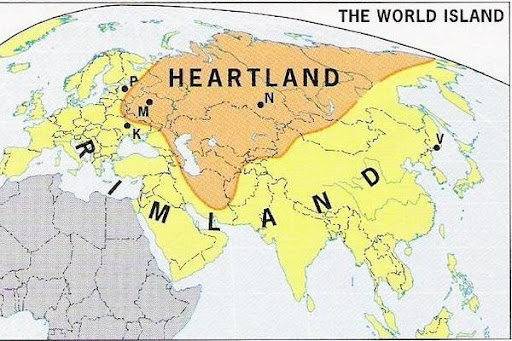
Before ending this unit, I feel obliged to shift the discussion from the false and fake ‘geo-politics’ to the true and genuine ‘geographical determinism’. When it comes to topics pertaining to the Earth’s impact on empires, peoples and cultures, one has to point out that these topics did not come to surface only in Modern Times; they have constituted an integral part of all the major civilizations of World History. They were known as part of the ancient wisdom, knowledge and sciences; and this was already known to Orientalists, historians and philologists. This knowledge we presently define as ‘geographical determinism’.
Ancient erudite scholars, high priests, mystics and explorers always viewed the material universe as hinging on the spiritual universe; consequently, they were adamant in identifying concordances between the two entities. Part of their scientific knowledge and understanding depended on their spiritual wisdom and exploration. Among the scientific disciplines that they developed and which they viewed as an undividable unity of spiritual and material knowledge and wisdom, ‘geographical determinism’ was only one.
Geographical determinism was not only a concept and a theory, but a practice and a set of criteria as to how to live in Ancient Assyria, Babylon, Egypt, Hittite Anatolia, Elam, Cush, Canaan-Phoenicia, and Iran. The same is valid for Carthage, Yemen, the Indus Valley, Turan, and China. The choice of dwelling places, the urban plans, the construction of temples and palaces, the orientation of cities, the identification of sacred sites, the direction of prayer, the selection of specific locations for rock reliefs and inscriptions, the recognition of the correct spots to place enormous statues, pillars and obelisks, altars and thrones, in one word everything, depended on the conclusions drawn after a deep study of geographical determinism.

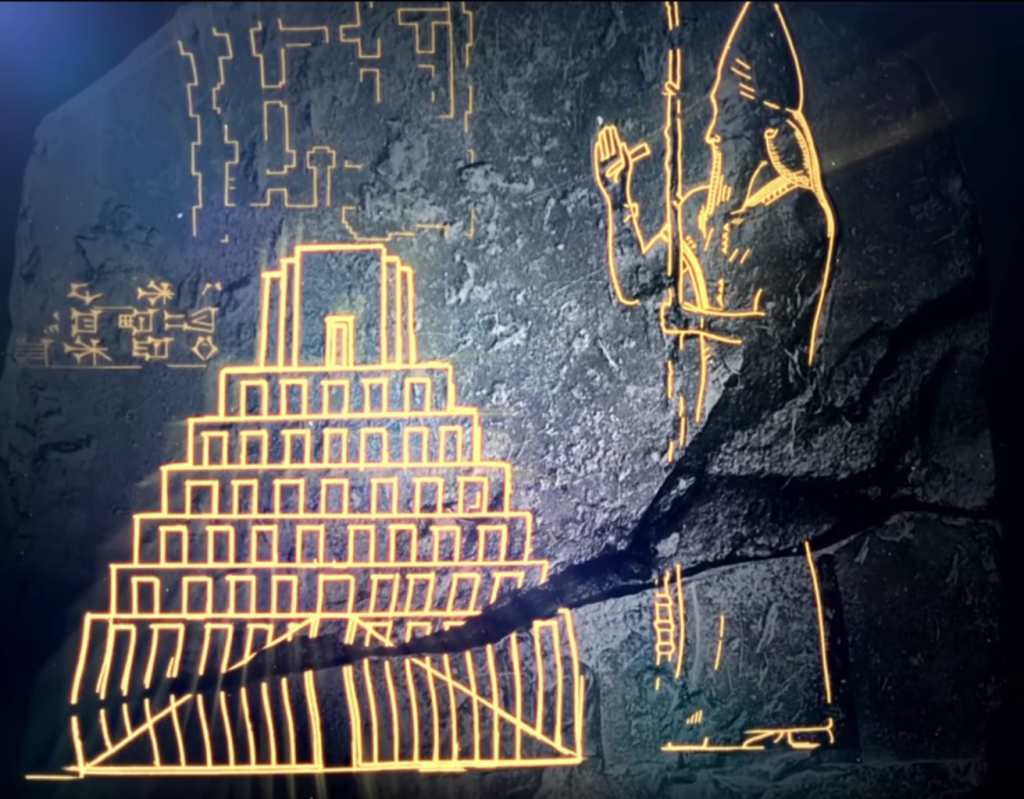
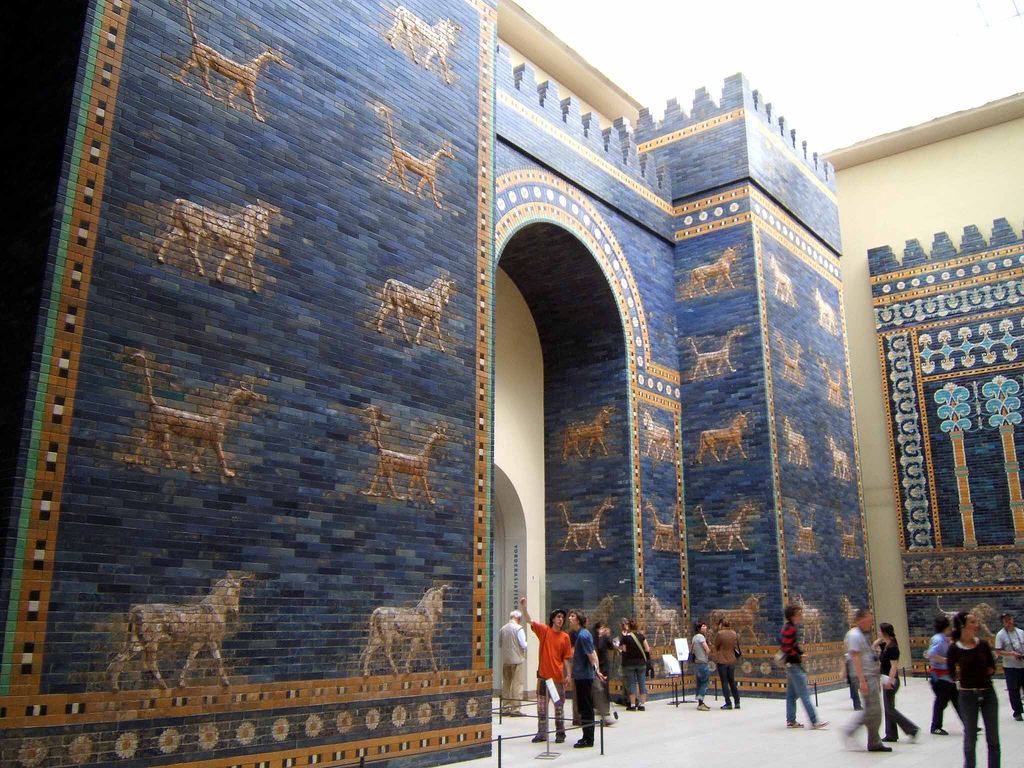

In fact, the interconnection of the spiritual and material universes is the sole factor that denotes and specifies the nature and the traits of every single geographical point, therefore revealing its uniqueness, importance and possible use. High priests, mystics and hierophants were able to duly explore and describe the locally particular interaction of the five elements (i.e. Ether, Soft Waters, Earth, Air, and Salt Waters) and the subsequent generation of electromagnetic flow per point. This is how they concluded as regards the eventual use of the geographical point, ground, space or area.
It matters little whether you delve in Assyrian-Babylonian, Egyptian and Iranian Cosmogony and Spiritual Ontology (see above, as regards the five elements) or you explore the Traditional Chinese Wuxin (五行) Ontology, as per which the five elements are the following: Metal (initially conceived as Gold and corresponding to Ether), Water (evidently conceived as Soft Waters), Earth, Wood (corresponding to Air) and Fire. The conclusions were always identical. At the end of the day, either you were at the banks of Tigris, Euphrates, Nile, Huang-he (黃河/Yellow River) or Chang Jiang (黃河/Yangtze), geographical determinism functioned always as (to use a modern term) a fully accredited ‘urban environmental acupuncture’.

The ‘woke’ attitude to transfigure the term and turn ‘geographical determinism’ into ‘environmental determinism’ reveals only the ignorance and the paranoia of the corrupt left-wing social-justice movements and ideologies that currently exist in the worthless and already defunct Western world. This is so, because ‘geography’ meant always the study of the environment (not only the earth) in historical periods.
VII. From the Great Game to the Final Game
European colonial powers’ expansion brought destruction, barbarism, pandemics, wars, deaths, misery, poverty, inhumanity, demolition of cultures, and deracination of millions of people. European colonialism caused also two world wars and a 44-year long ‘cold war’. For these nefarious results and for all the crimes perpetrated, the European colonial states (Portugal, Spain, France, Holland, Belgium, and England) and their derivatives (USA, Canada, and Australia) will have to pay dearly for their attempt to annihilate so many historical nations, destroy their traditions, and uproot their cultures.
Quite unfortunately, the Western colonial and neo-colonial powers did not regret and did not repent for the calamitous and inhuman deeds that they carried out worldwide. There is a serious reason for this grave mistake and unacceptable attitude; the unrepentant savages of US, UK, NATO and their allies are controlled by forces that push the world to the edge, as they advance in the implementation of an eschatological agenda that provides for the extermination of more than nine tenths of the current world’s population. If this claim appears farfetched, one has only to read the text of the magnificent monument known as the Georgia Guidestones; it will be enough.
The persistent manner by which the ruling classes of the colonial powers seek to achieve the extermination of the largest part of world’s population is not a reason for inactivity and despair. There are opposite forces actually working to avert the evil plans, cancel the targets, and lead the colonial powers to self-destruction, social chaos, climactic disorder, ultimate implosion, and total decomposition. Constituting a continuation of the Shanghai Five, which started in 1996 as a mutual security agreement between China, Kazakhstan, Kyrgyzstan, Russia, and Tajikistan, the Shanghai Cooperation Organization (SCO) consists in the greatest alliance in the History of Mankind as it represents more than 40% of the world’s population and almost 25% of the global GDP.
Offering a multi-level synergy in diverse fields, such as security, economy and cultural cooperation, SCO was launched in 2001 with the additional engagement of Uzbekistan; it was considerably enlarged in 2017 with the participation of Pakistan and India as full members. Observer status was offered to Mongolia (2004), Pakistan, India and Iran (2005), Afghanistan (2012) and Belarus (2015). Dialogue partner status was extended to Sri Lanka (2009), Turkey (2012), Armenia, Azerbaijan, Cambodia and Nepal (2015).
SCO expanded in parallel with the groundbreaking Belt and Road Initiative (OBOR) and in cooperation with the Eurasian Economic Union (EAEU: Russia, Kazakhstan, Kyrgyzstan, Belarus and Armenia as members and Uzbekistan, Moldova and Cuba as observers). On 17th September 2021, Iran was accepted as full member state (the technical and legal processes may take more than a year to be completed) and Egypt, Qatar, and Saudi Arabia were granted dialogue partner status.
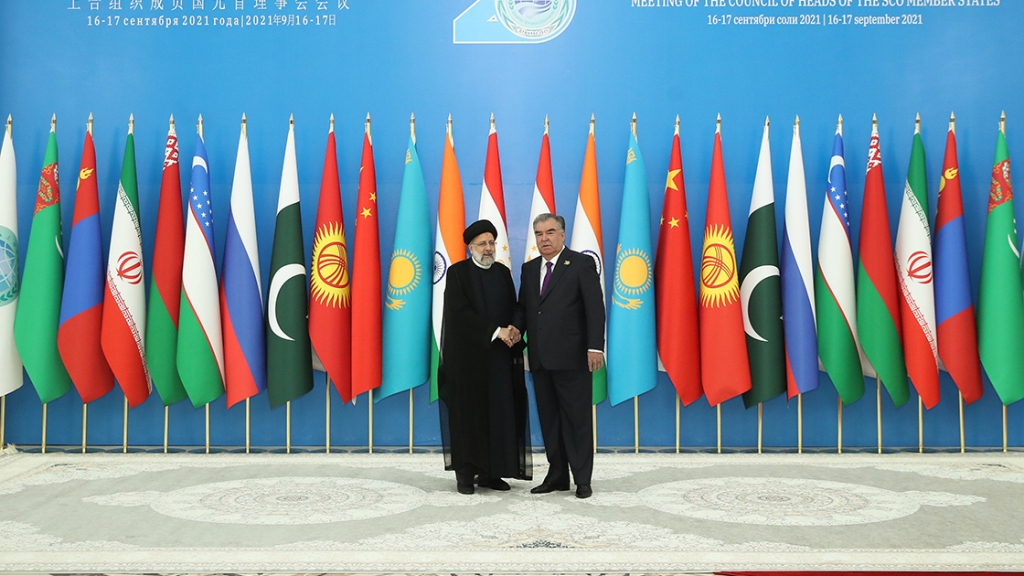
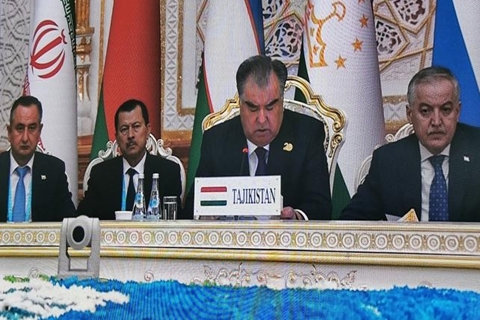
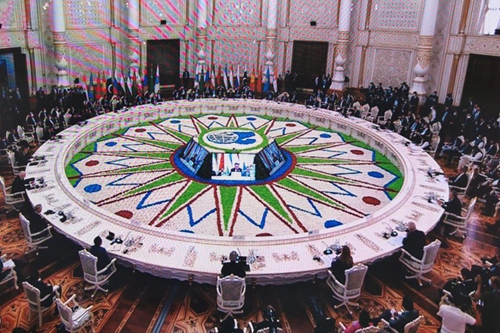
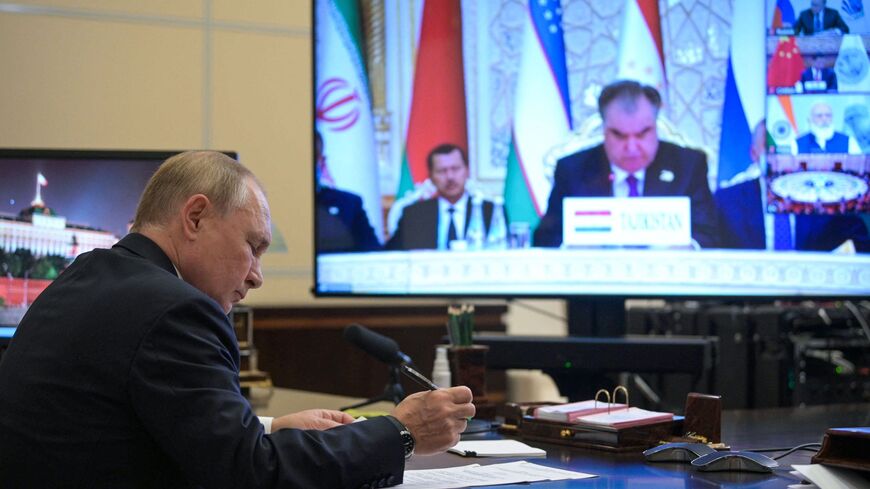
Governed by consensus, the Shanghai Cooperation Organization is not the anti-NATO or anti-EU as many people think; however, if we take into consideration the brilliant failures of NATO where one member sabotages the goals of the other and the final impasse of the European Union where every plan has been in deadlock after the European refugee crisis (2015) and the Brexit referendum (2016), no one needs to repeat the experience of these two bodies or to function similarly. The Turkish-Greek row for the case of NATO and the courageous, constant and resolute opposition of the Visegrad Group to the Brussels authorities constitute the perfect examples in this regard.
Being a forum for cooperation, synergy and engagement rather than a typical regional alliance, SCO will be able to gradually encompass Southeast Asia and Africa, thus leaving US, UK, Canada, Australia, France and Holland to implode all on their own. To mark an outstanding success as the world’s first superpower with human face and without colonial past, Beijing must steadily maintain a multilayered approach to international affairs, distinguishing bilateral alliance from multilateral cooperation.
Drawing on hitherto successes and capitalizing on its enormous resources, China must act as the liberating force within a world plagued with colonial divisions, racist concepts, discriminatory prejudices, delusional Euro-centric theories, and historical falsifications. Creating the image of a popular superpower, China must build on Education, Culture, Intellect, Science, Humanity and Justice, unveiling to all and demolishing forever the myths, the delusions, the aberrations and the forgeries that supported the West European and North American colonial adventure, i.e. mankind’s worst nightmare.
About:
https://www.president.ir/en/131311
https://tass.ru/politika/12380355
https://www.mk.ru/social/2021/09/17/iran-poluchil-status-polnopravnogo-chlena-shos.html
https://news.cctv.com/2021/09/09/ARTI7XWt2KbA2OzpqwkLmh1a210909.shtml
http://world.people.com.cn/n1/2021/0917/c1002-32230485.html
http://www.news.cn/english/2021-09/18/c_1310196298.htm
http://www.news.cn/2021-09/19/c_1127879690.htm
https://www.ntv.ru/novosti/2607682/
https://www.irna.ir/news/84473661/دستاورد-های-عضویت-کامل-ایران-در-سازمان-همکاری-شانگهای
h ttps://www.farsnews.ir/news/14000626000399/واکنش-کاربران-به-عضویت-دائم-ایران-در-سازمان-همکاری-شانگهای-این-ترکیب
http://eg.china-embassy.org/eng/zxxx/t1907870.htm
https://business.com.tm/post/7609/turkmen-leader-emphasizes-scos-role-in-countering-global-threats
https://www.turan.az/ext/news/2021/9/free/analytics/en/7826.htm/001
——————————————
Download the article in Word doc.:
Download the article in PDF:
Download the article (text, pictures, legends) in PDF:

